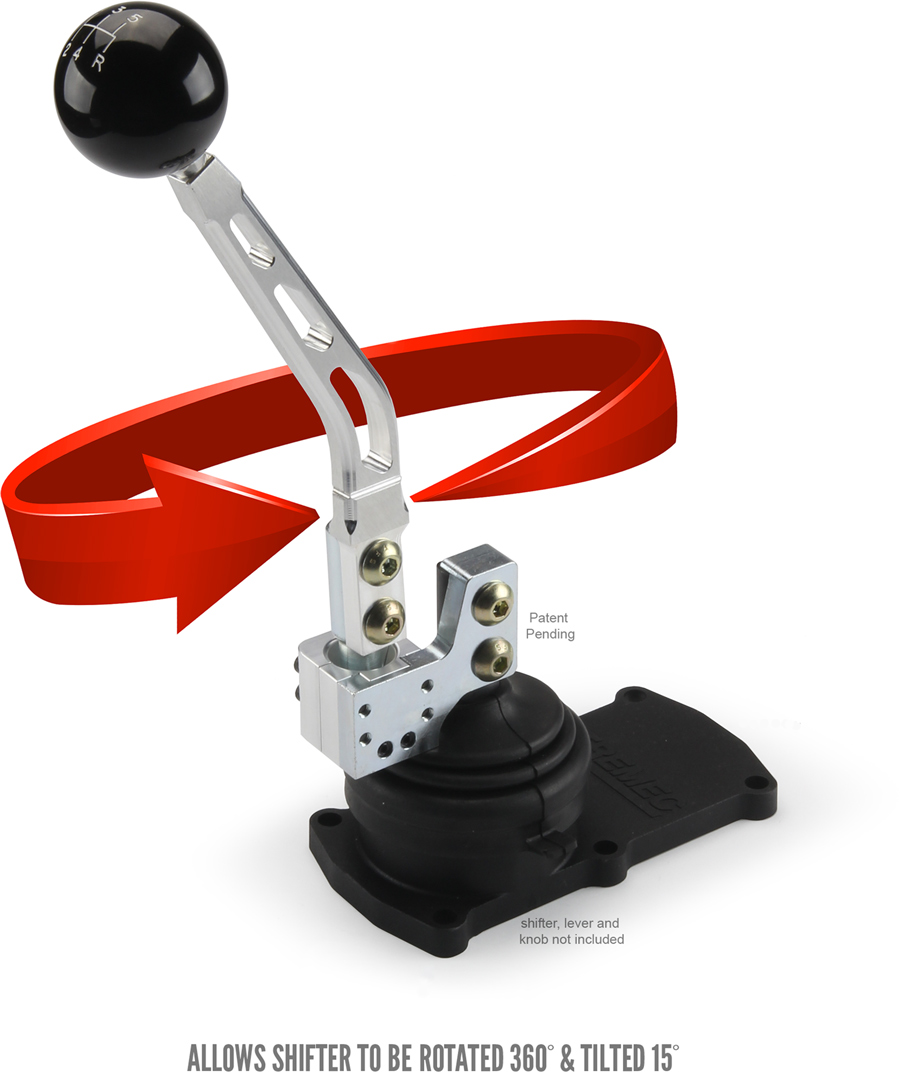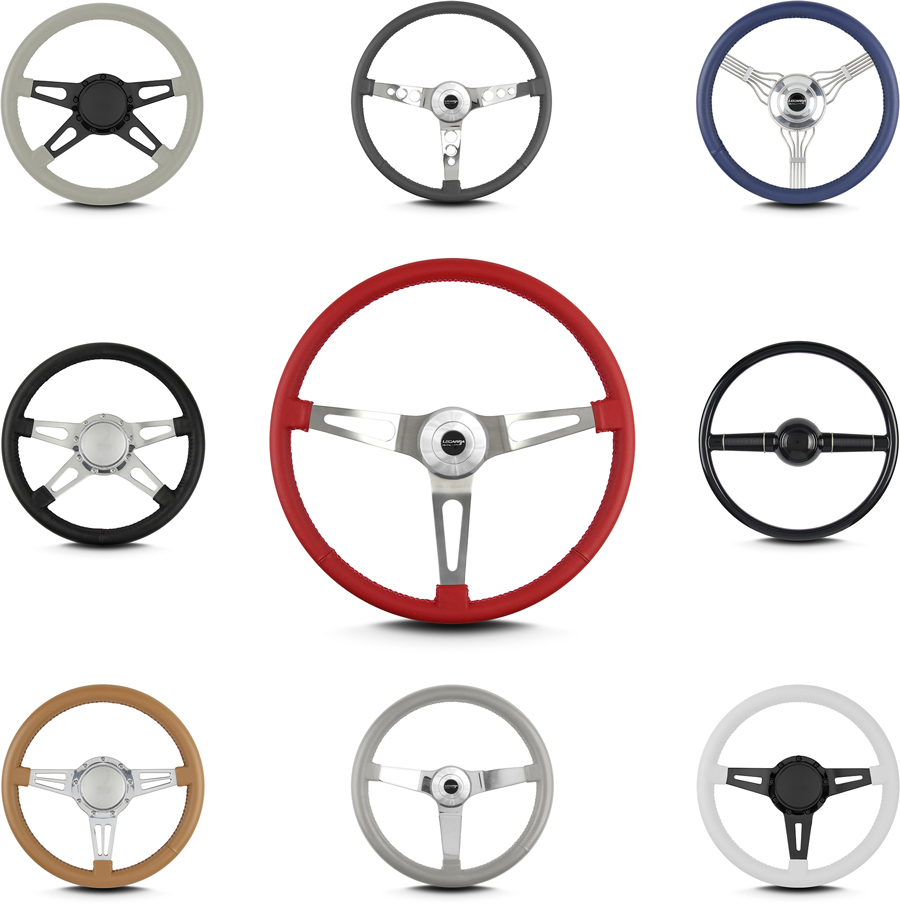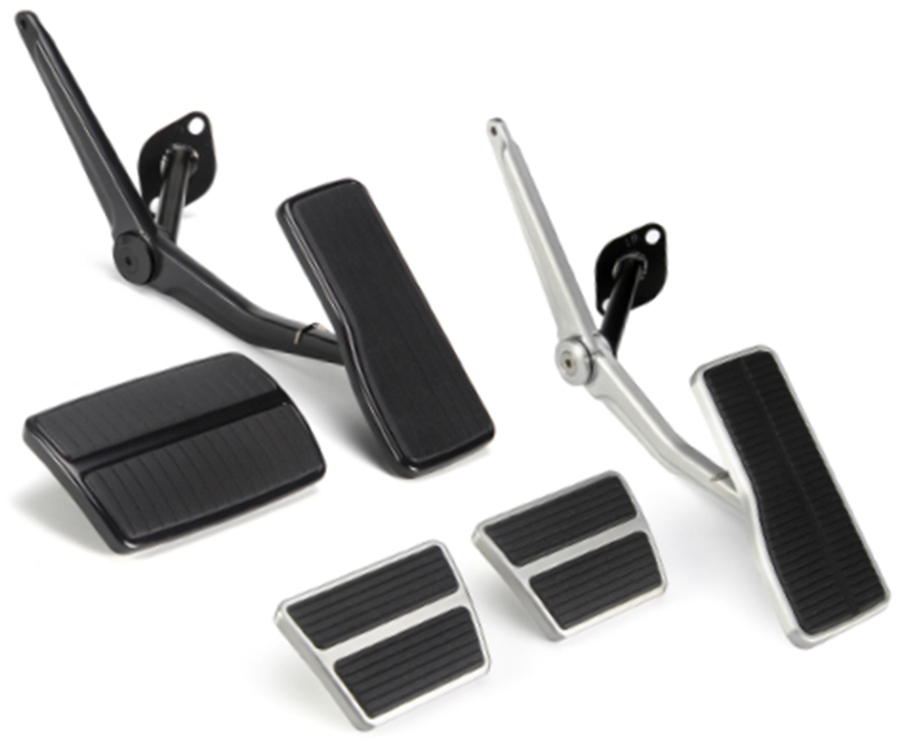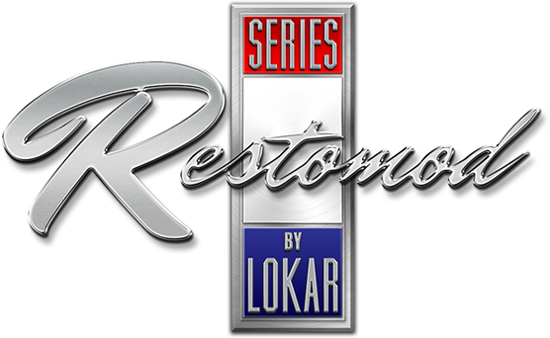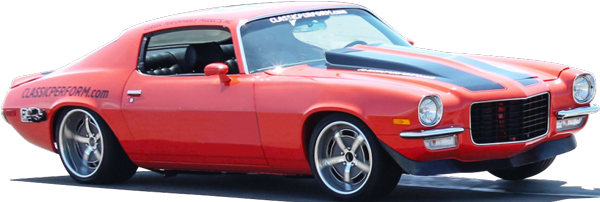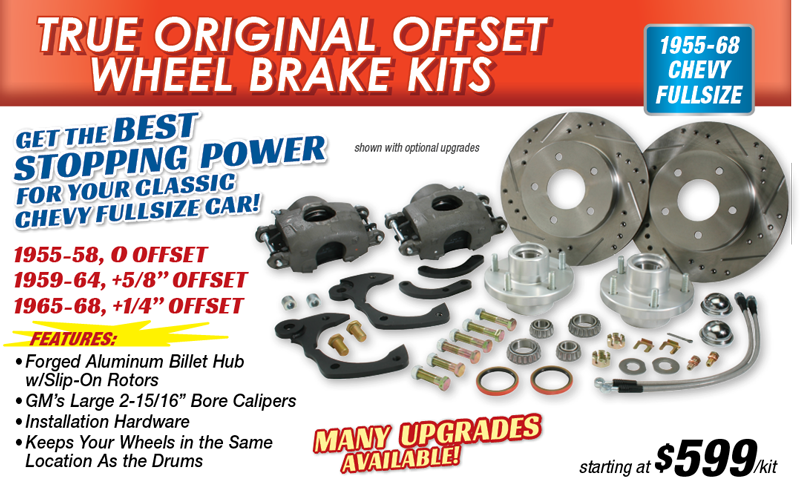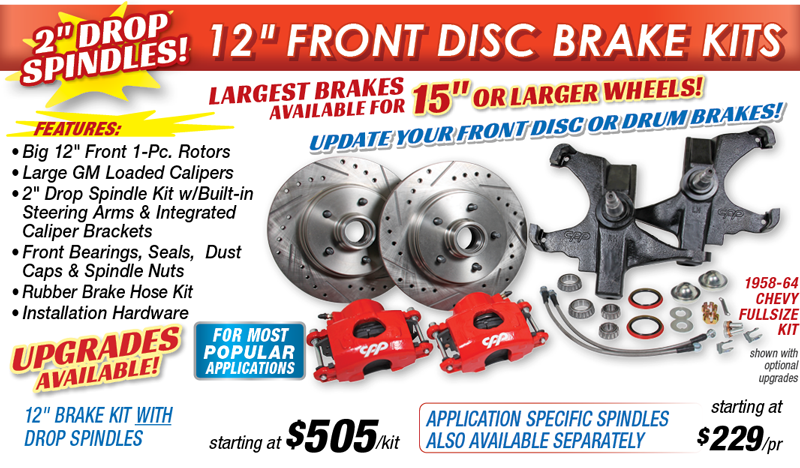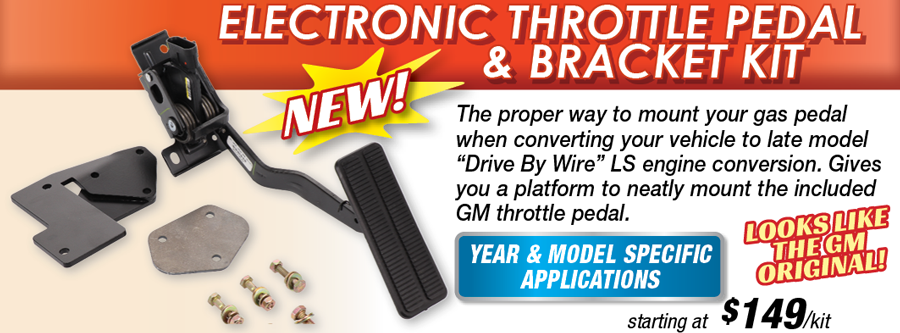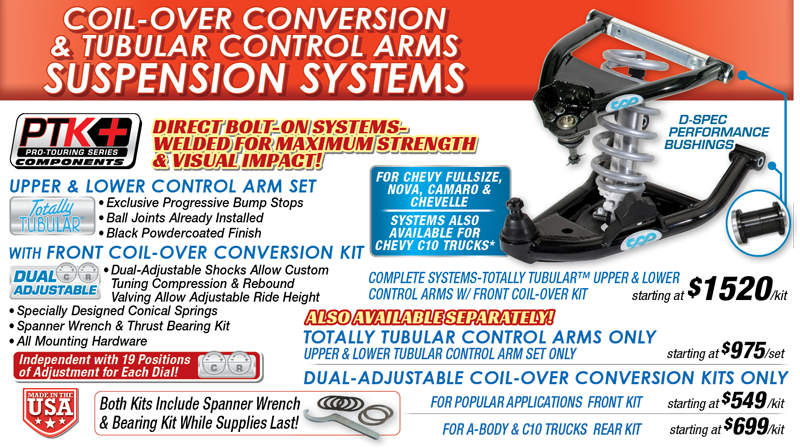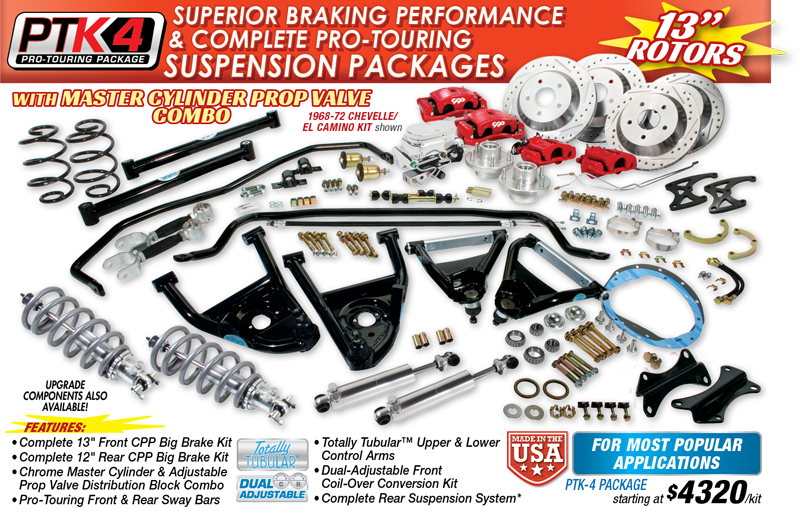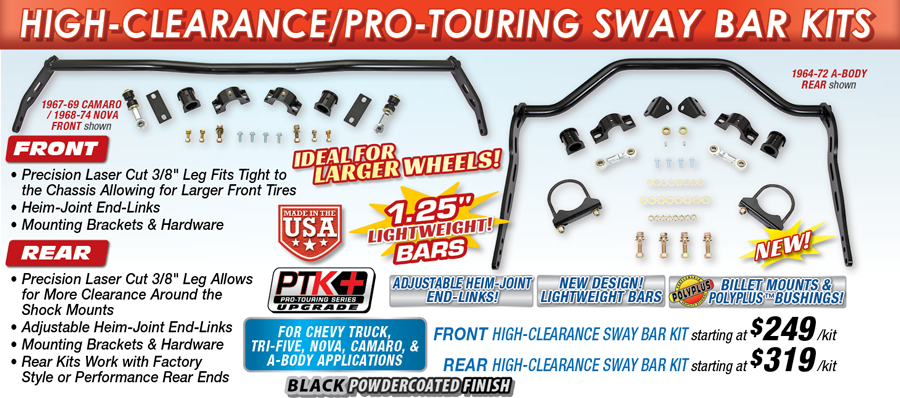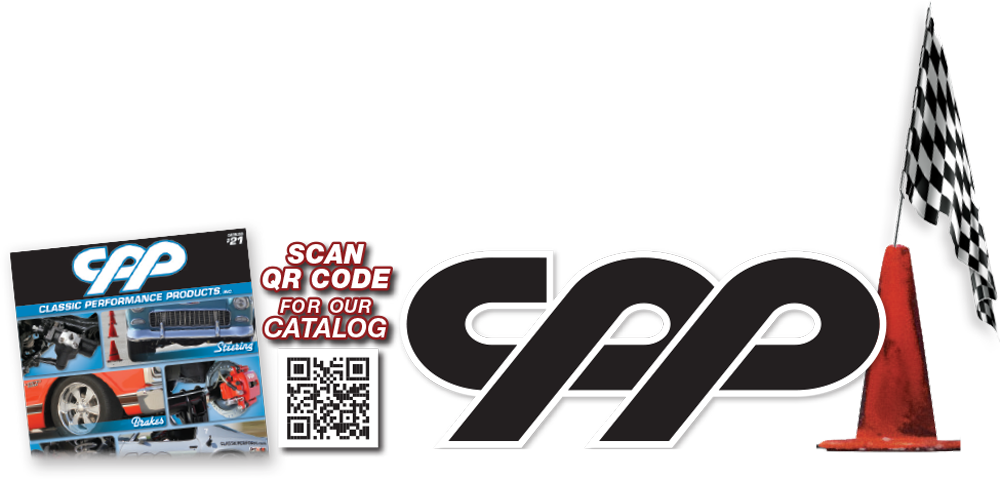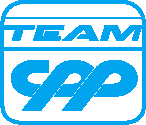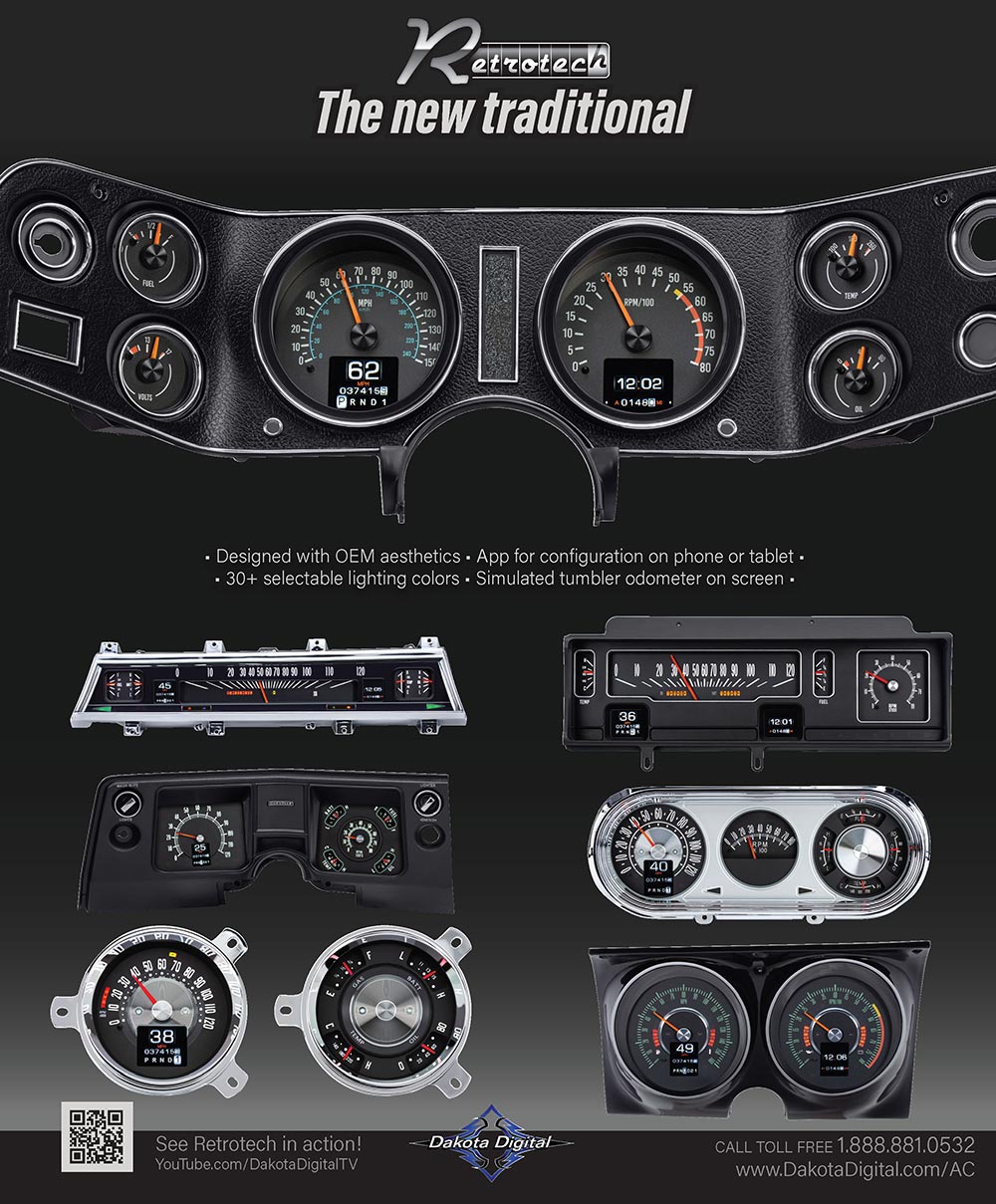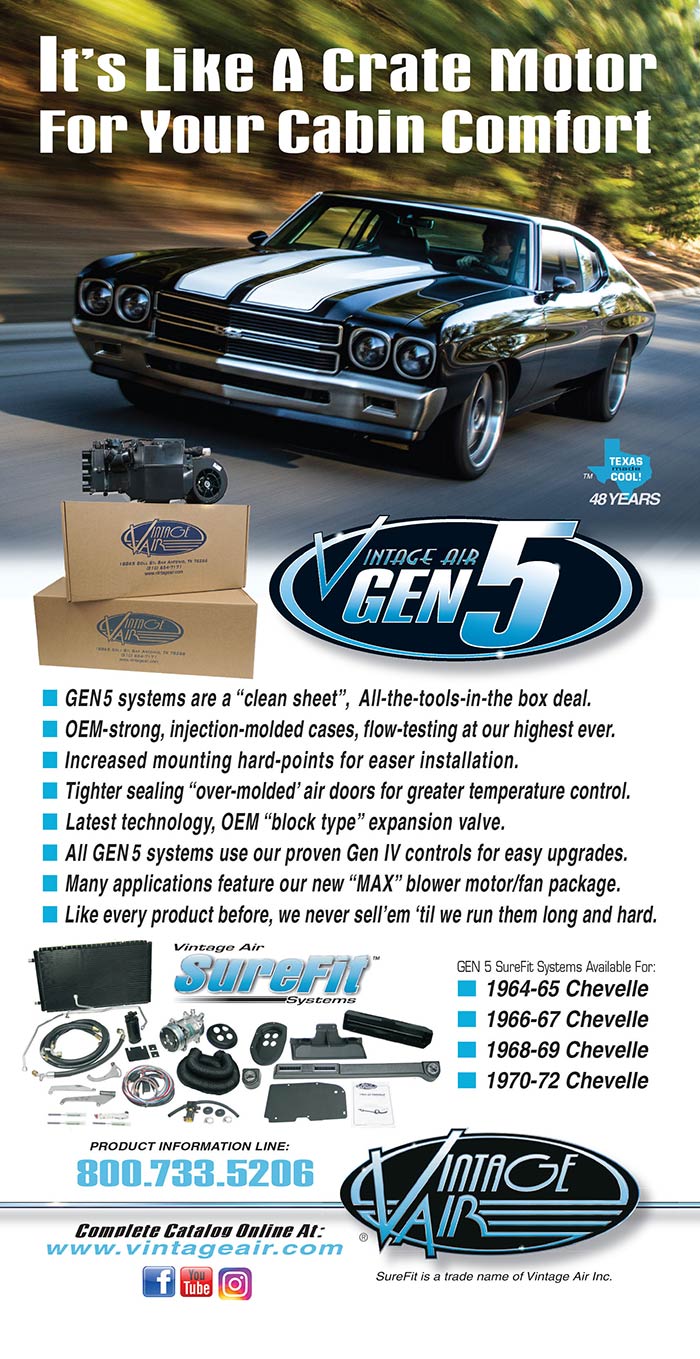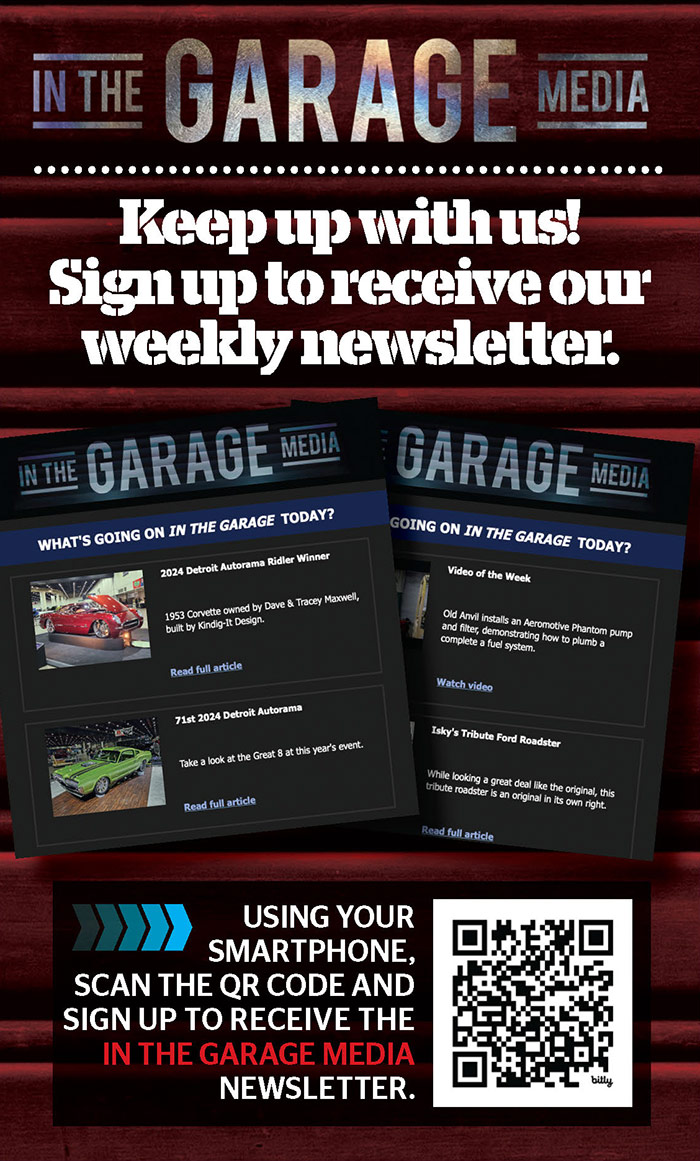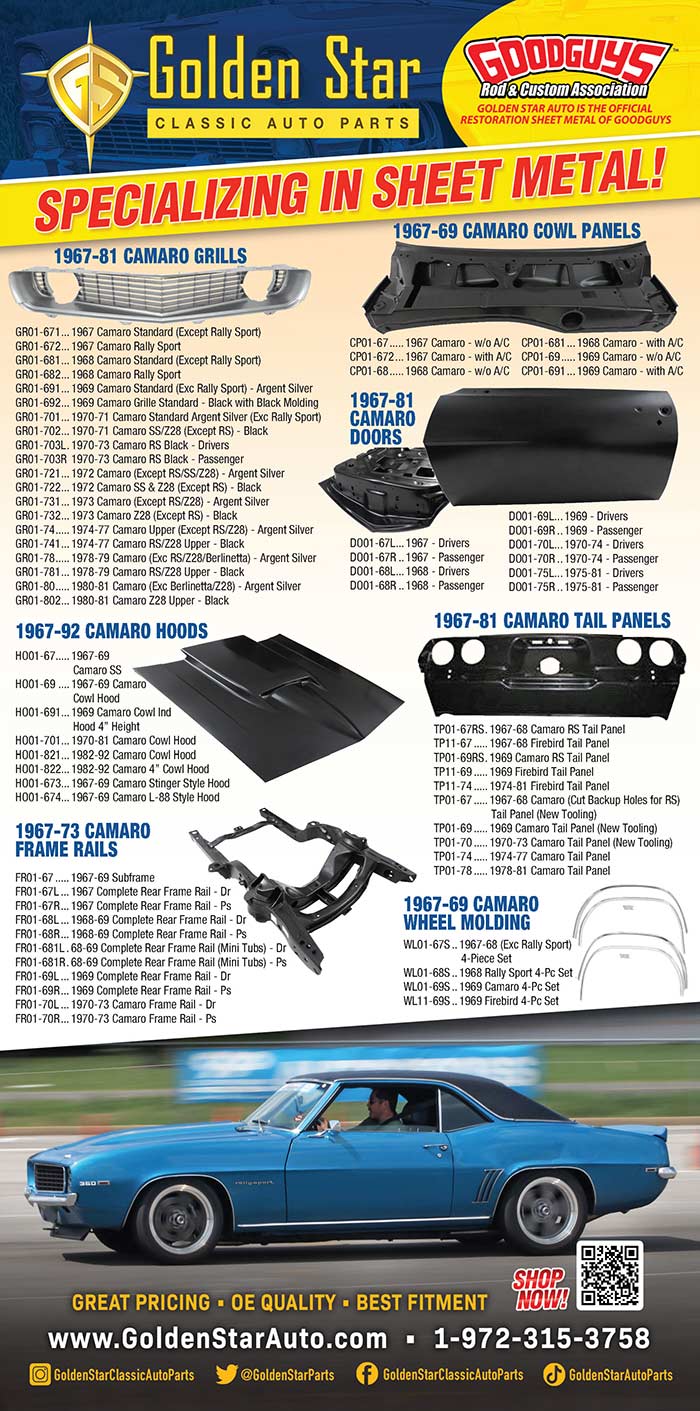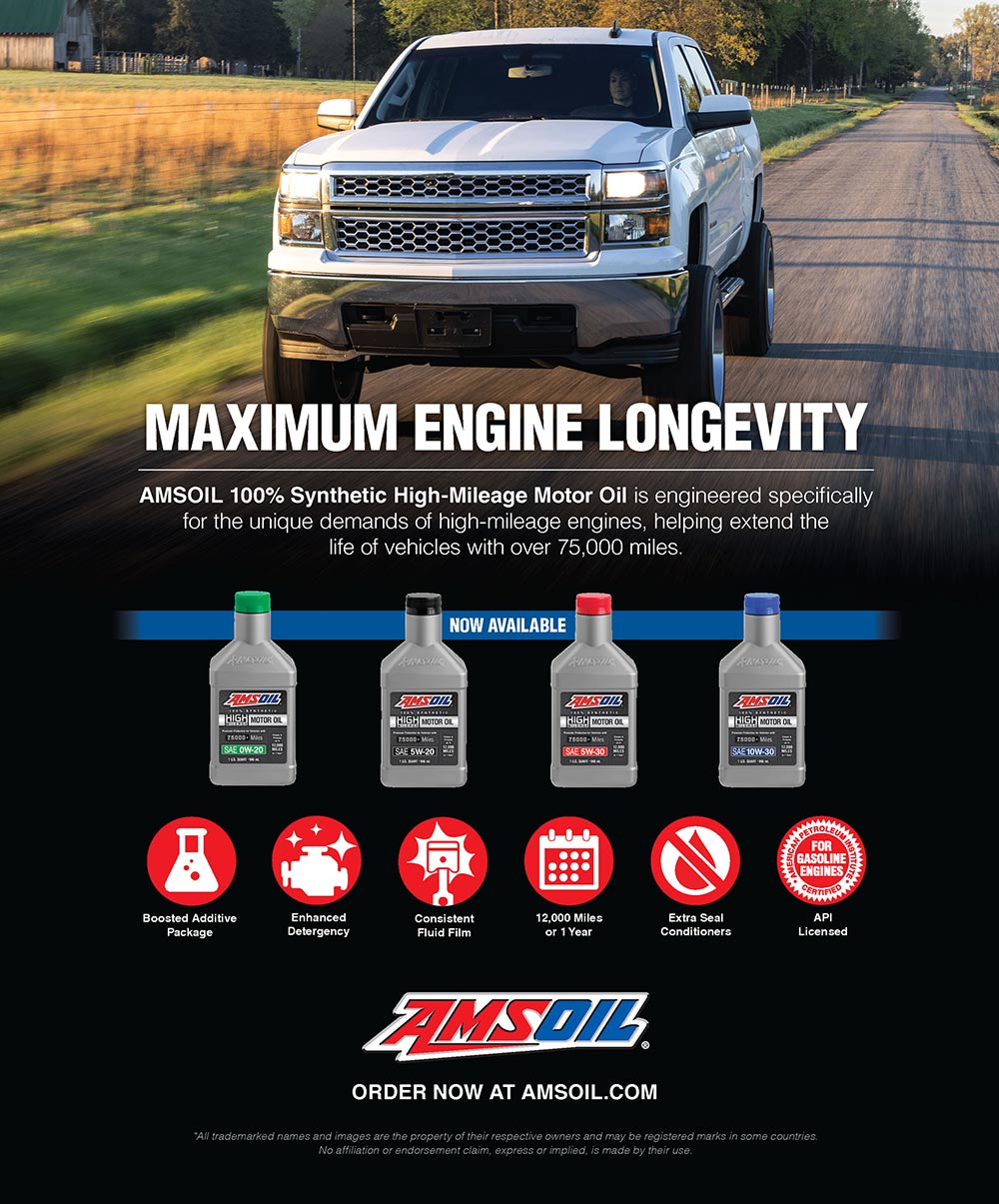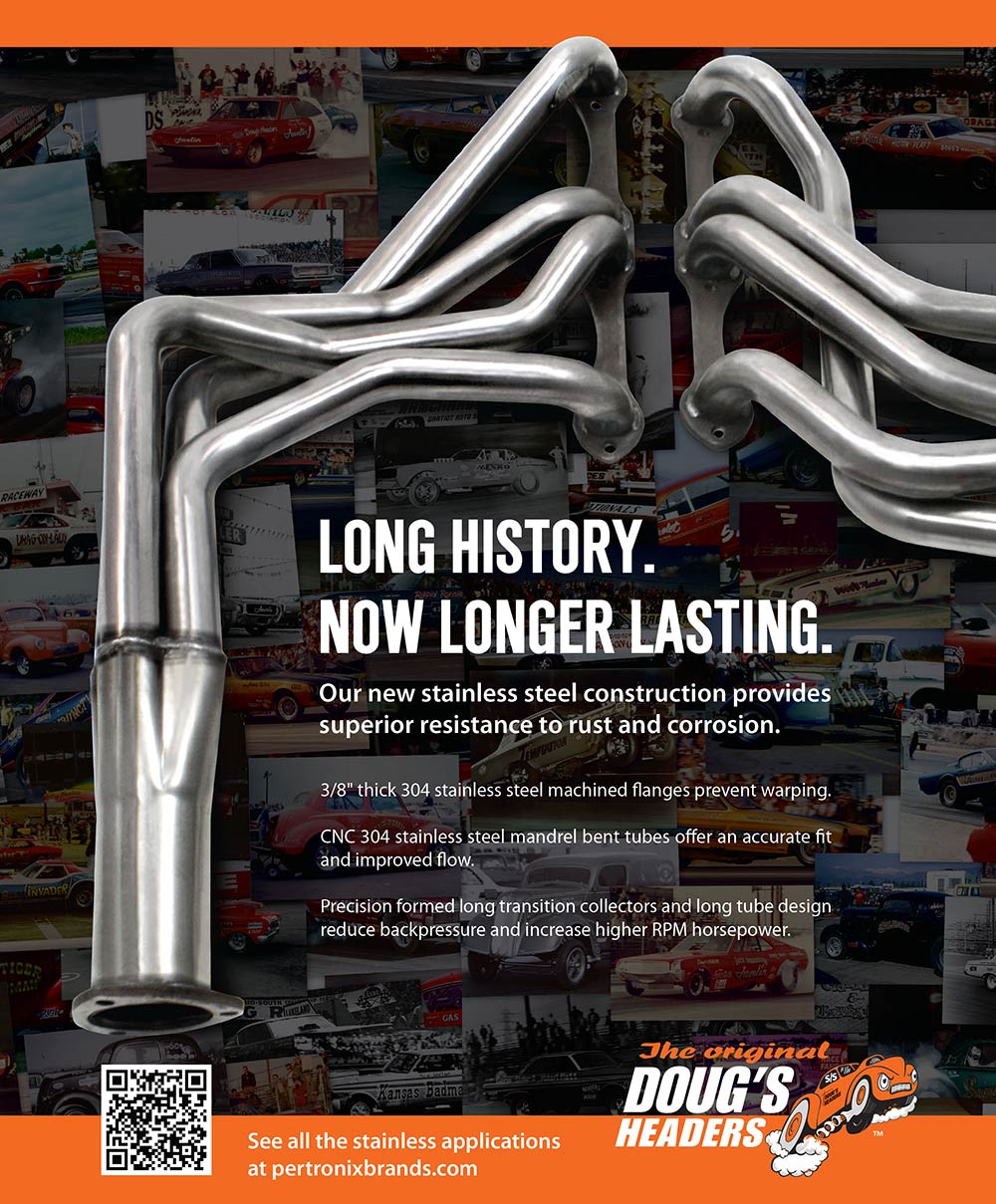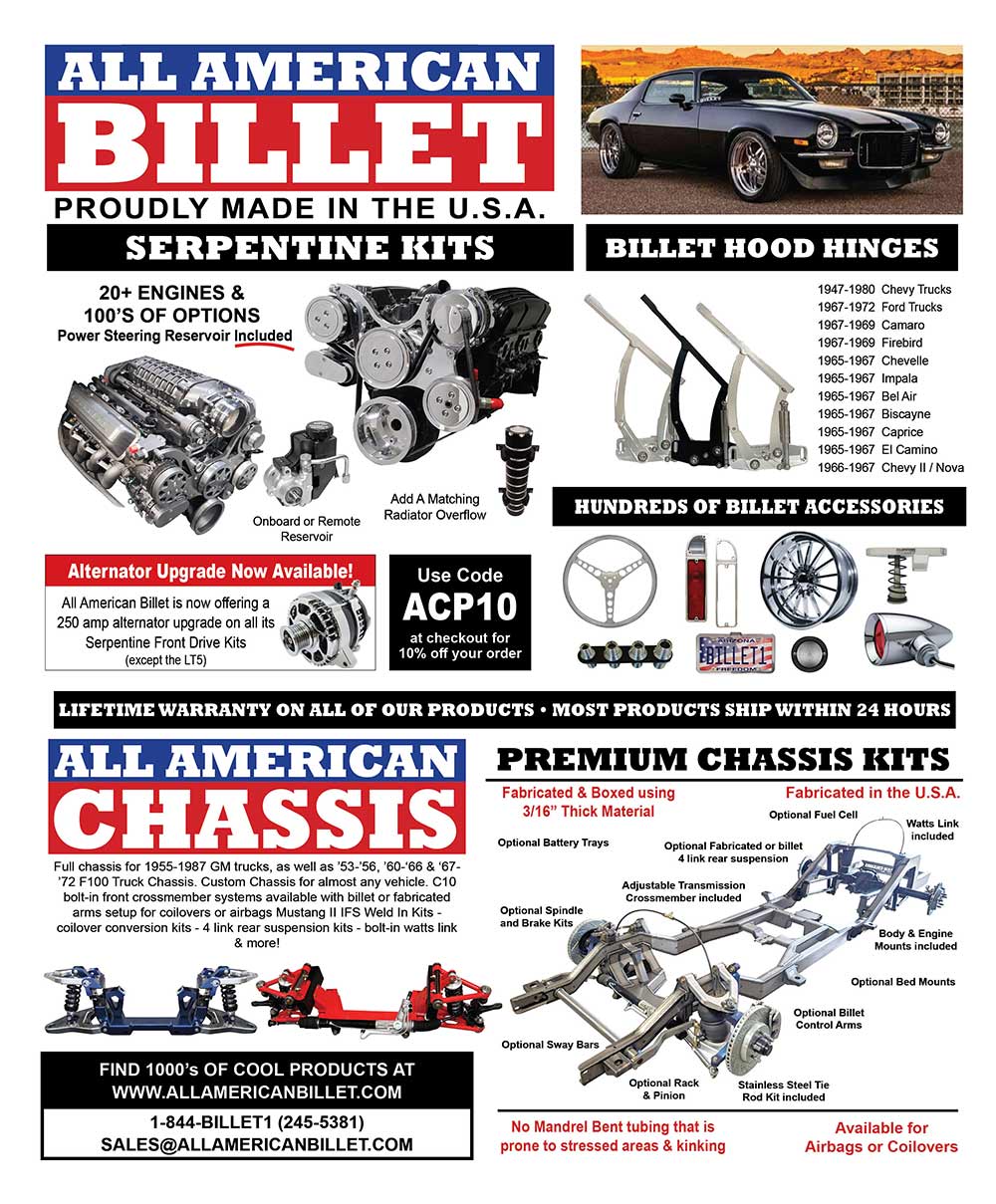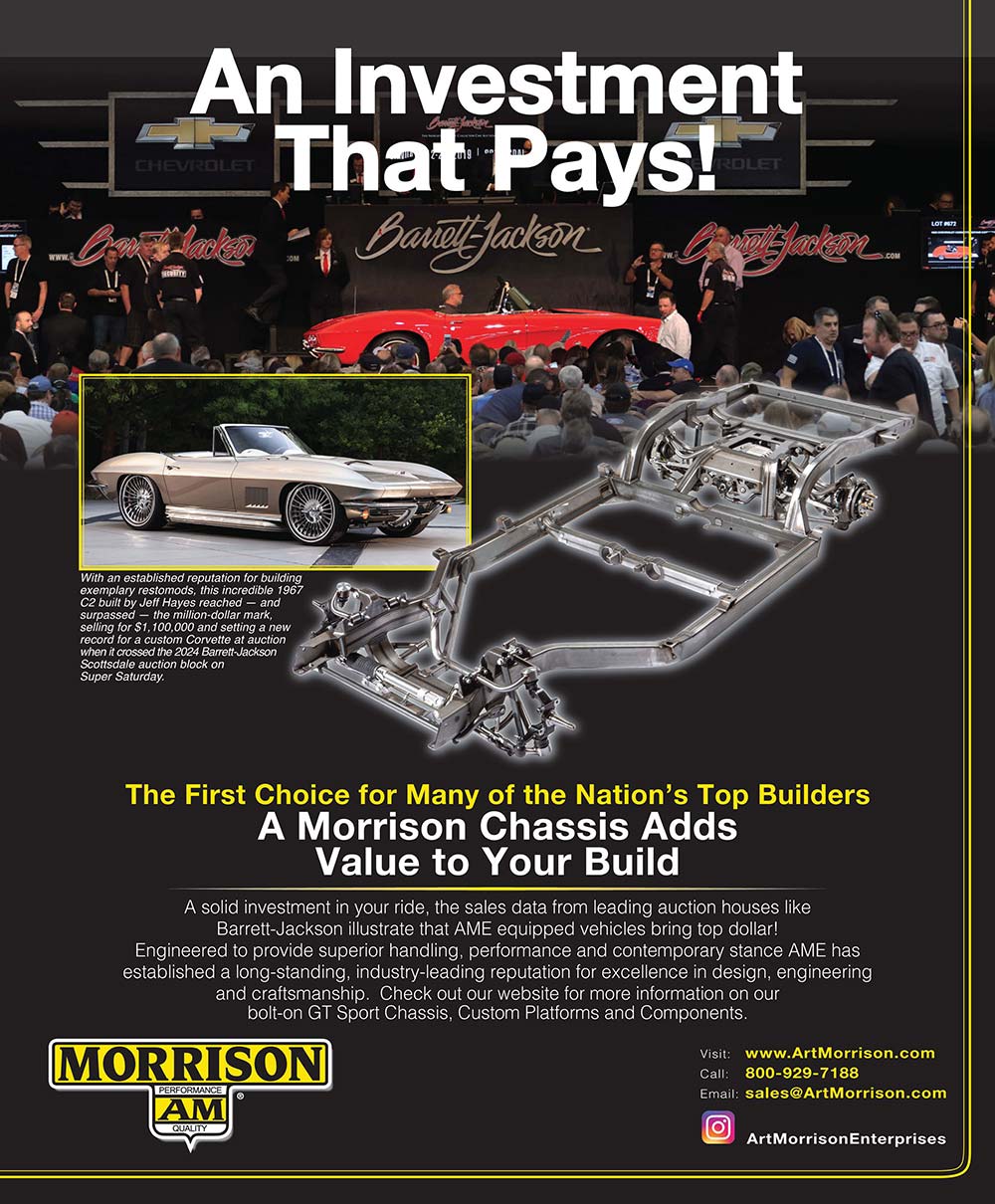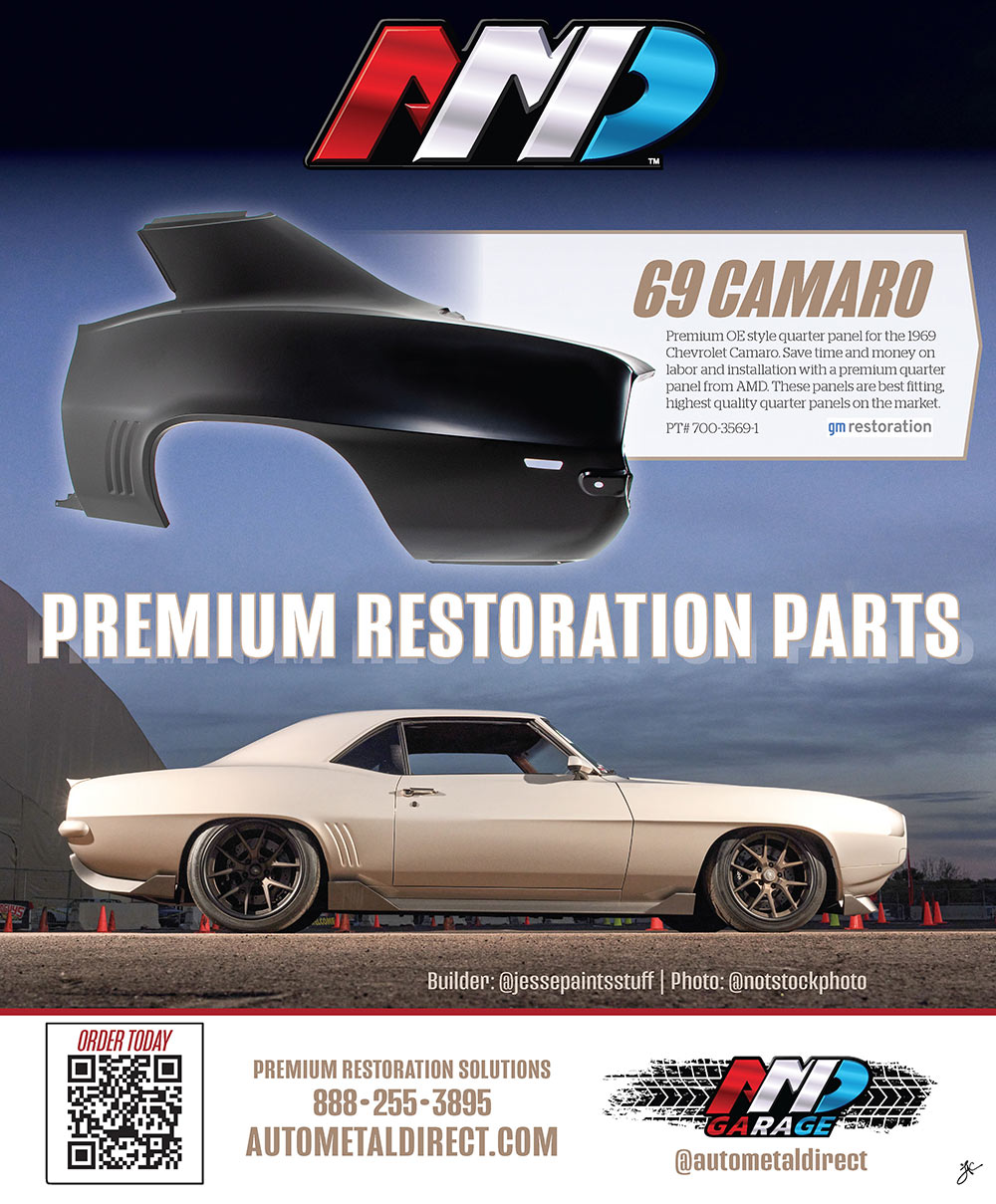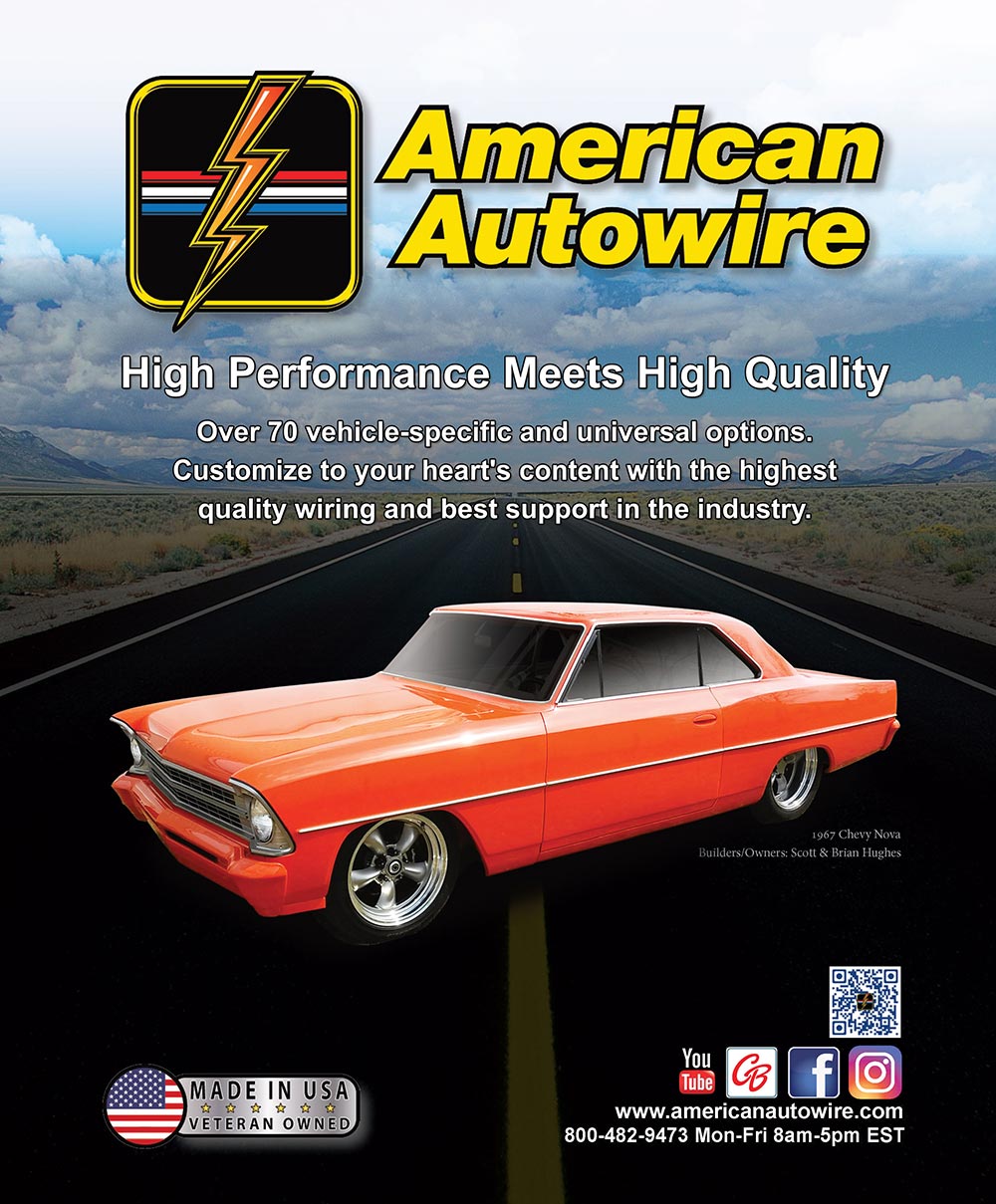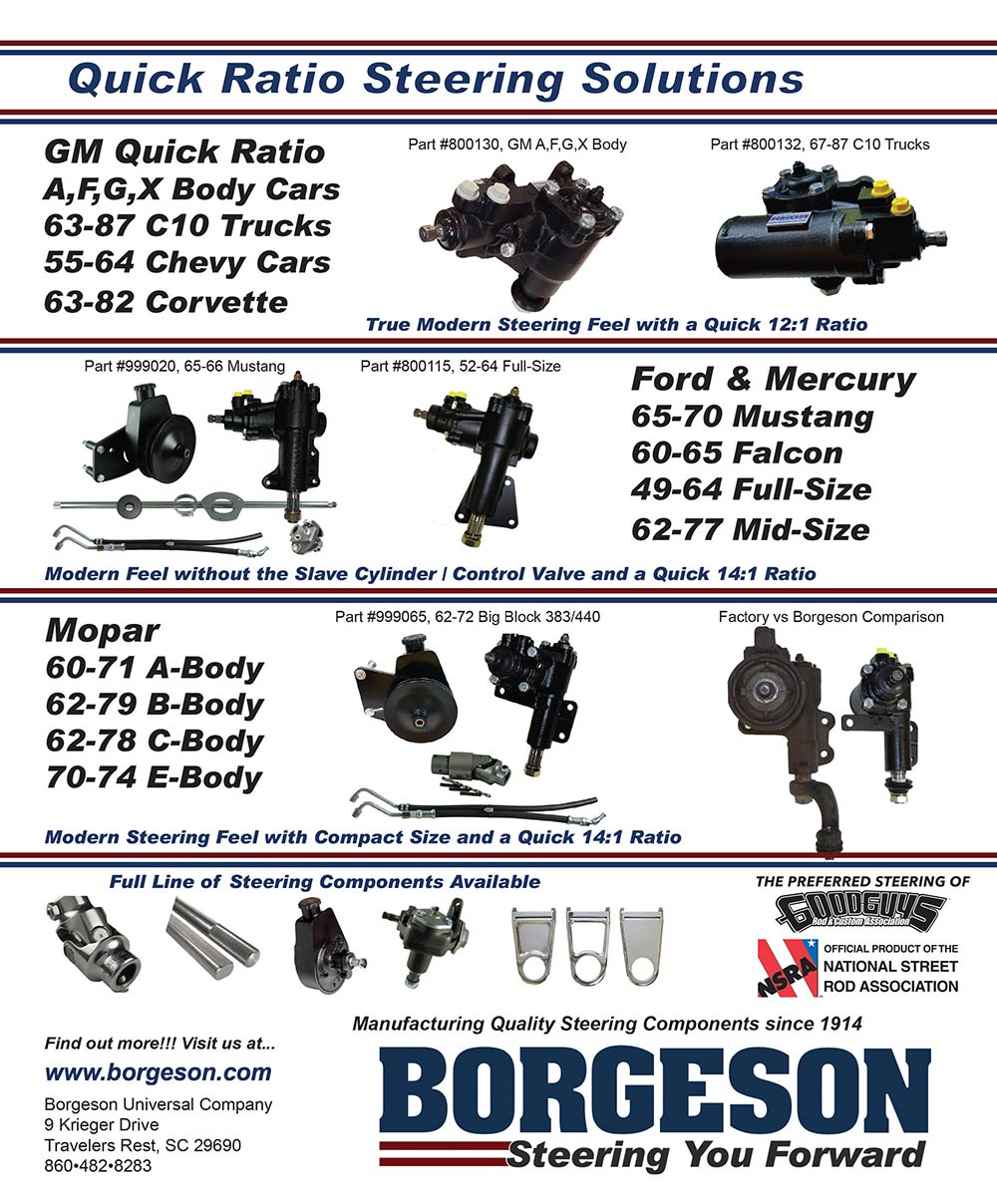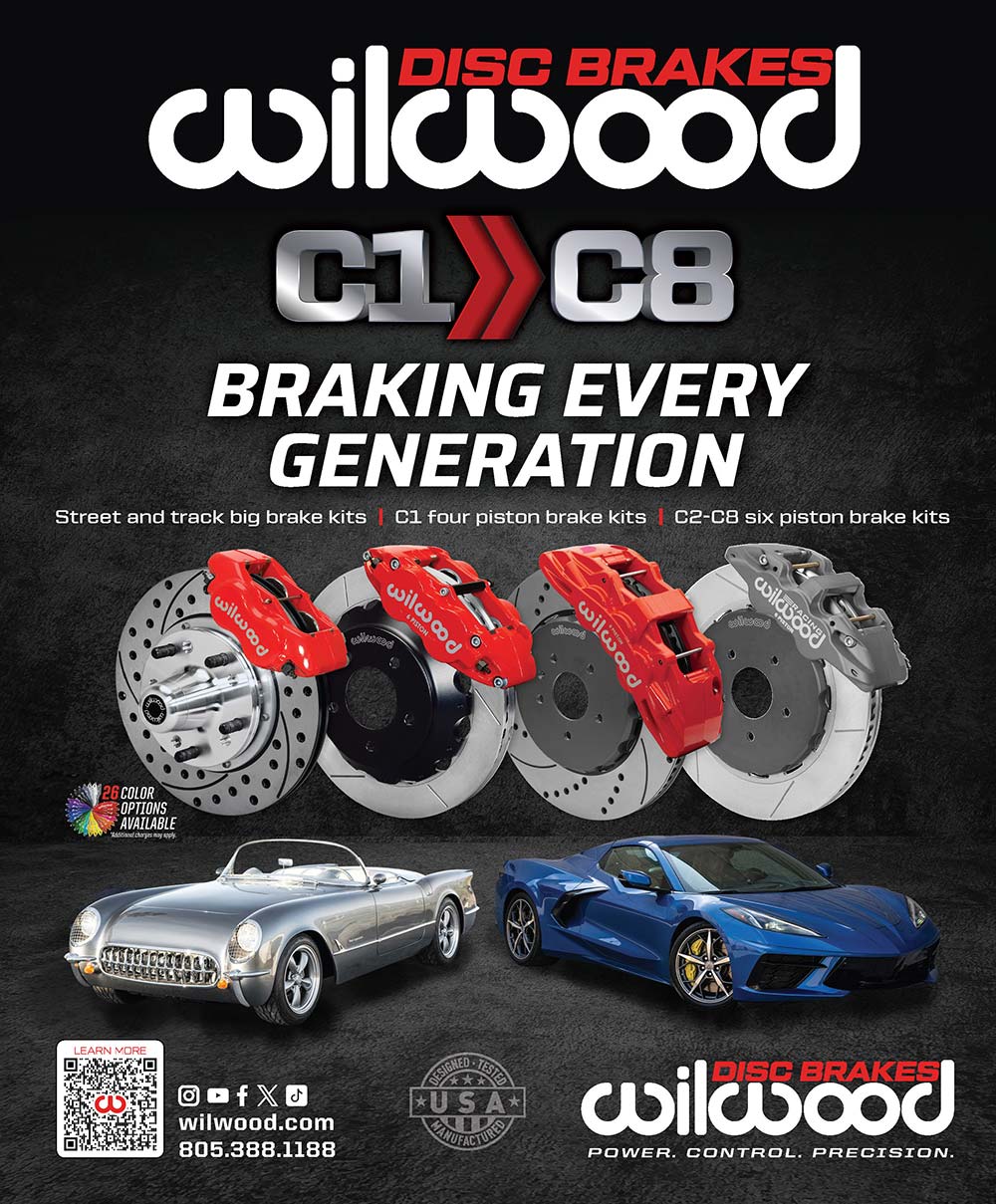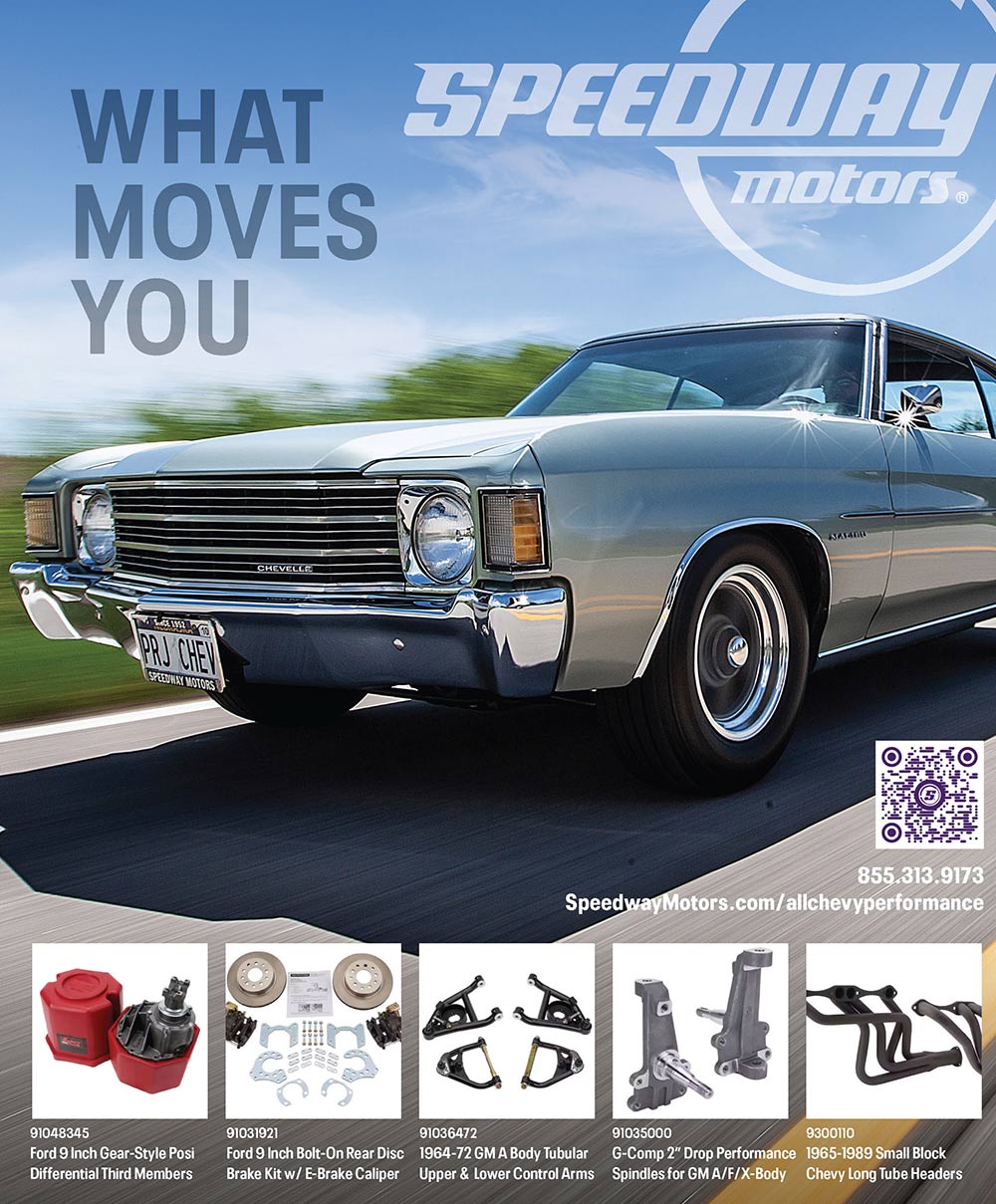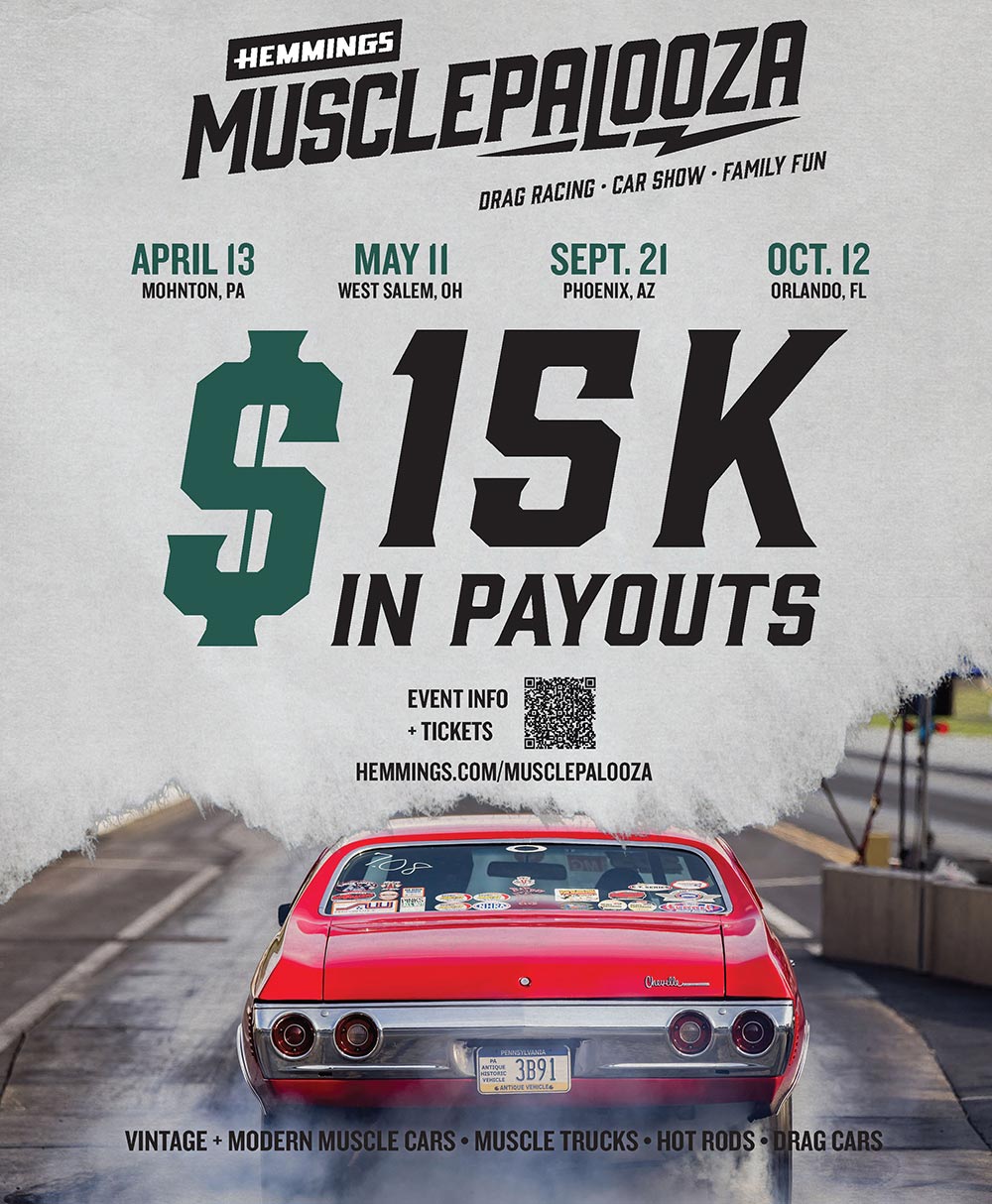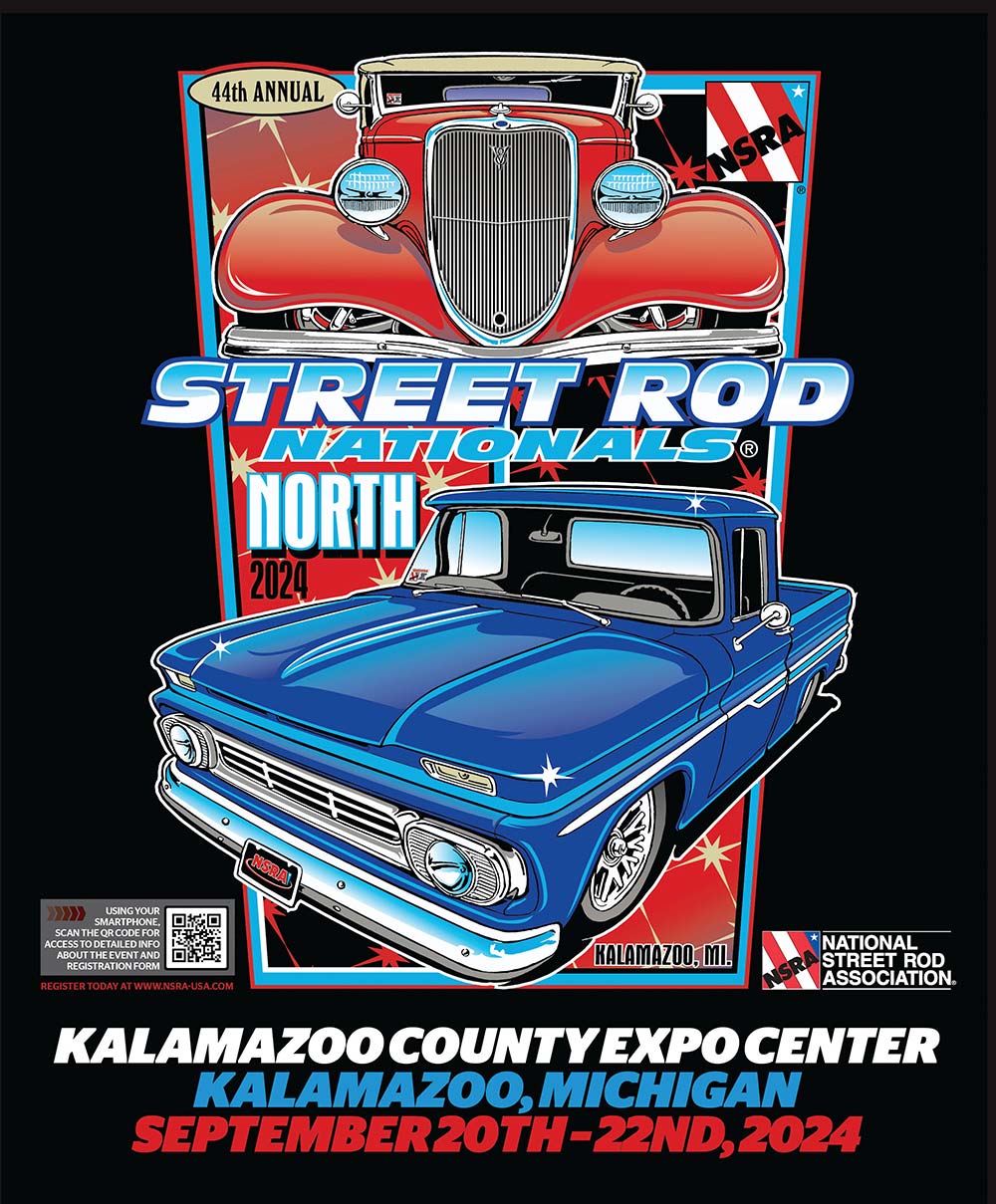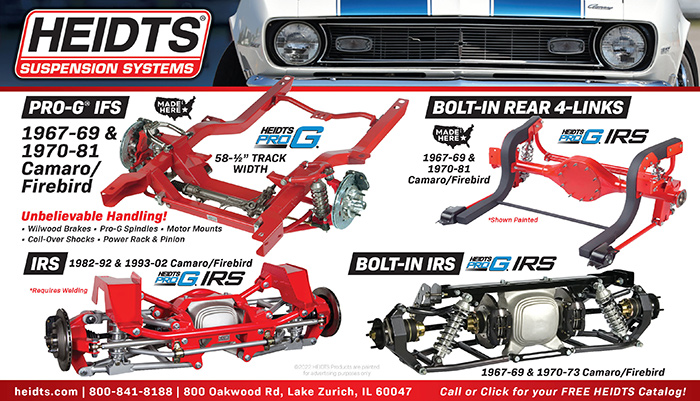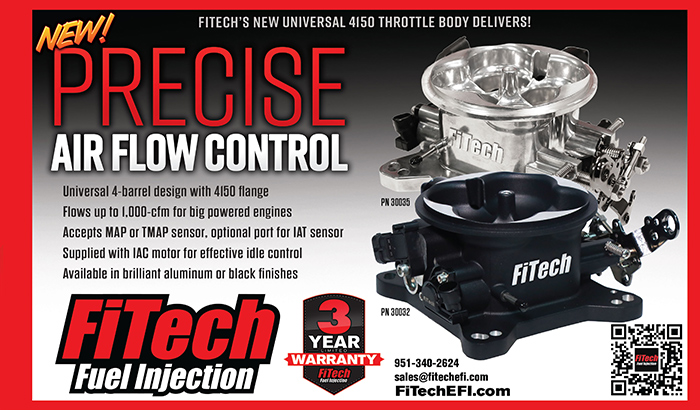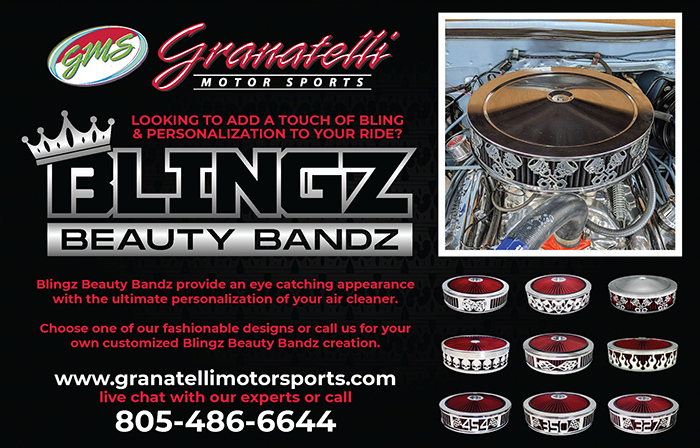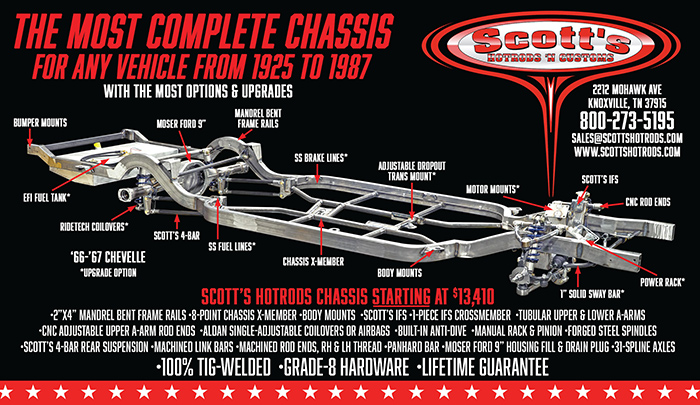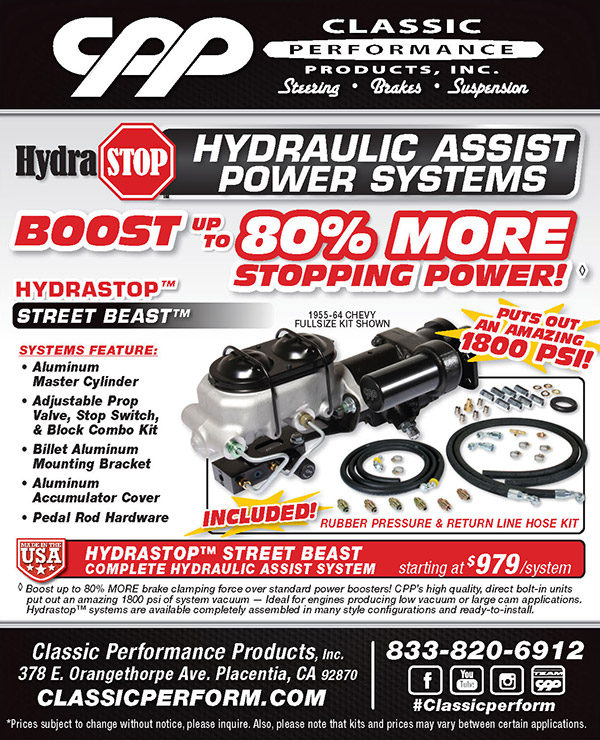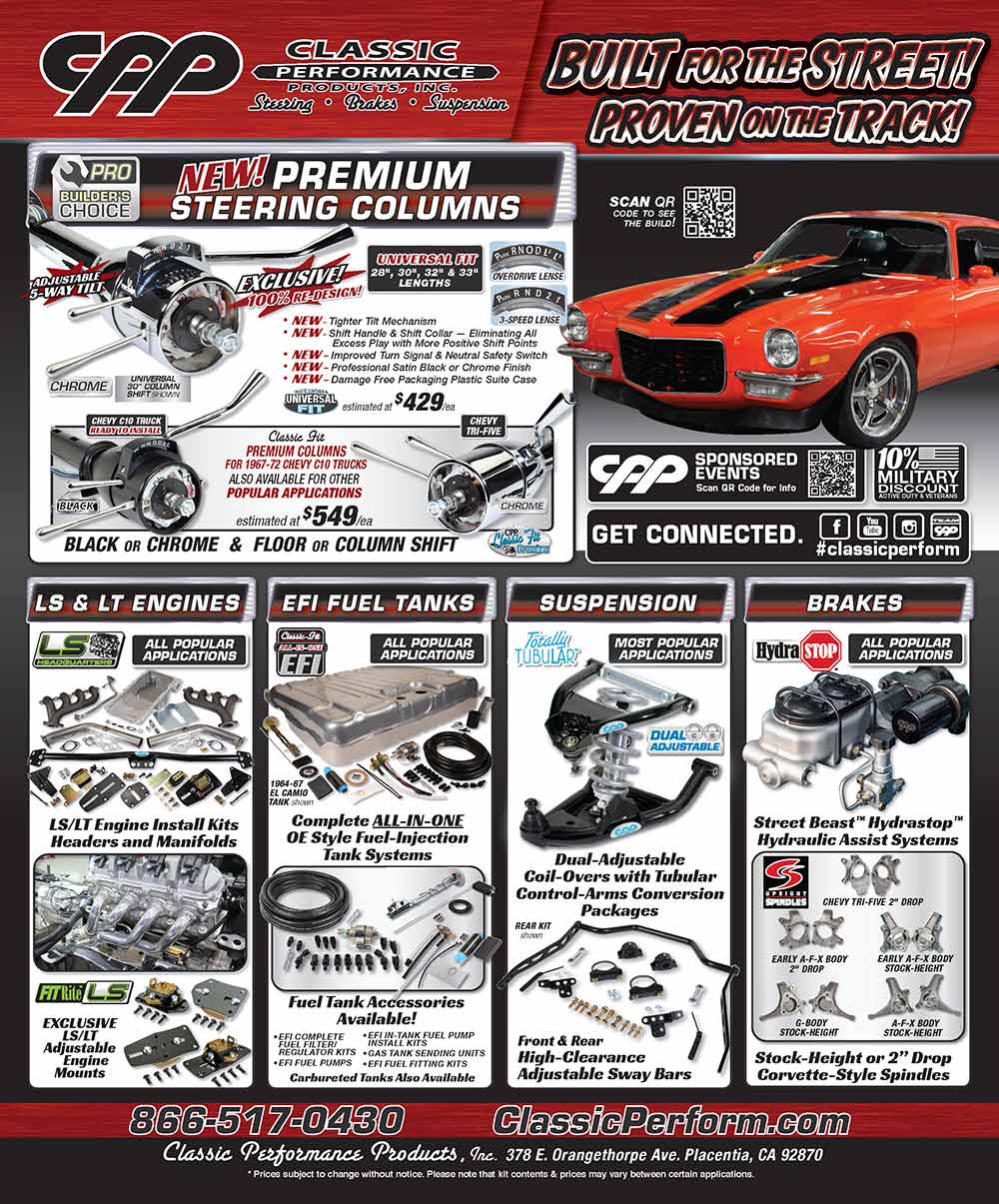

Caliper Rebuild
Used Oil Analysis Could
Save Your Engine

Used Oil Analysis Could Save Your Engine
 TOC
TOC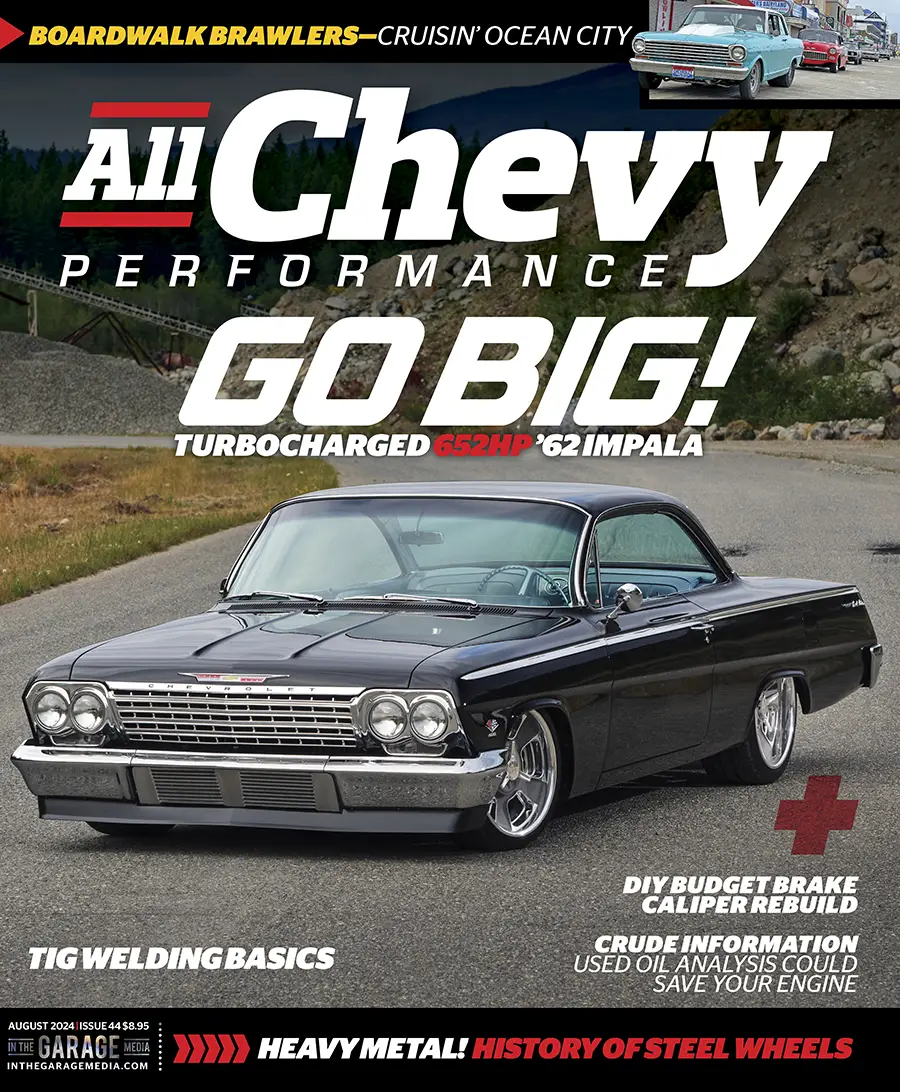
Cover image by NotStock Photography.
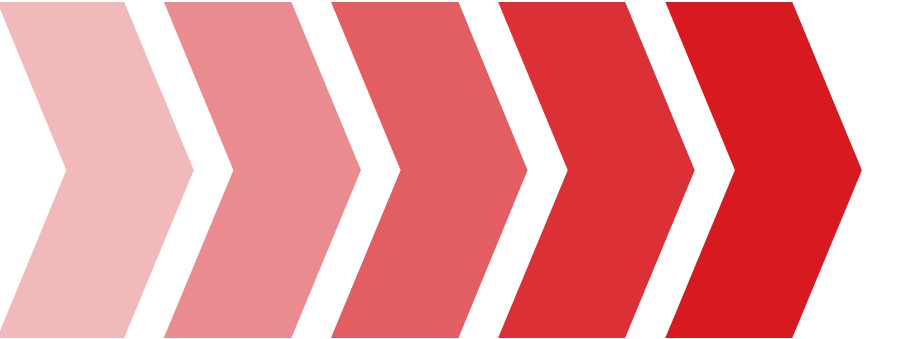
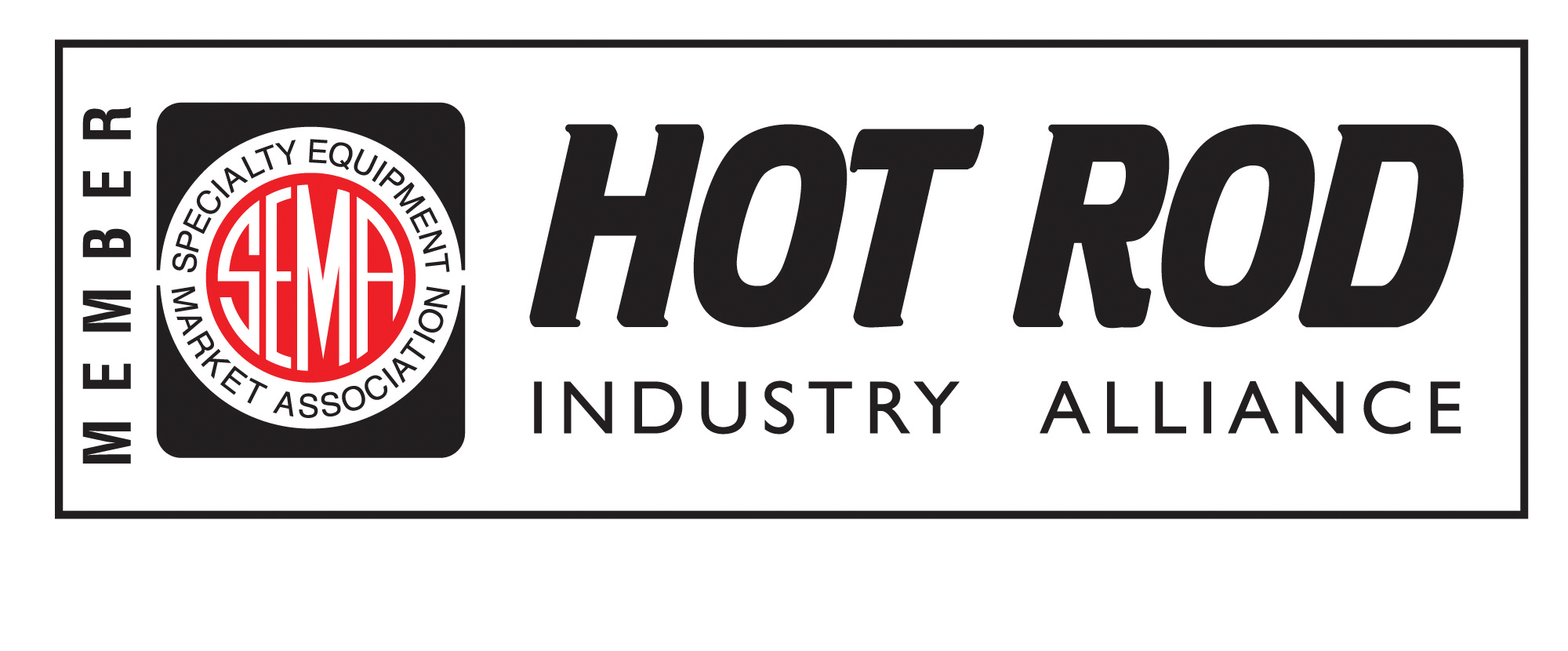
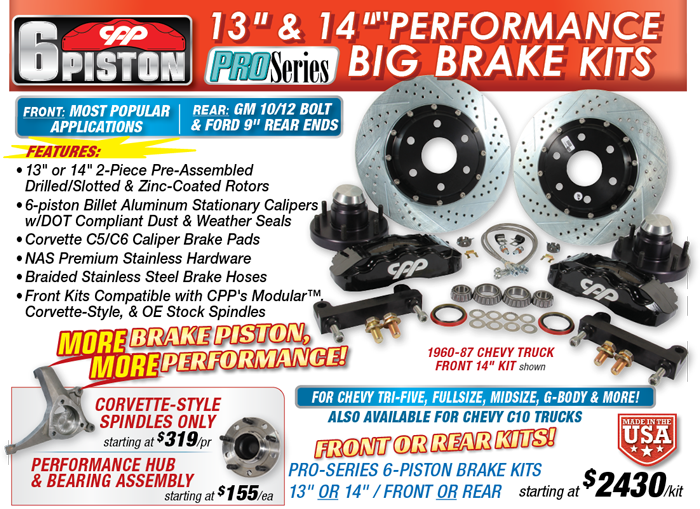
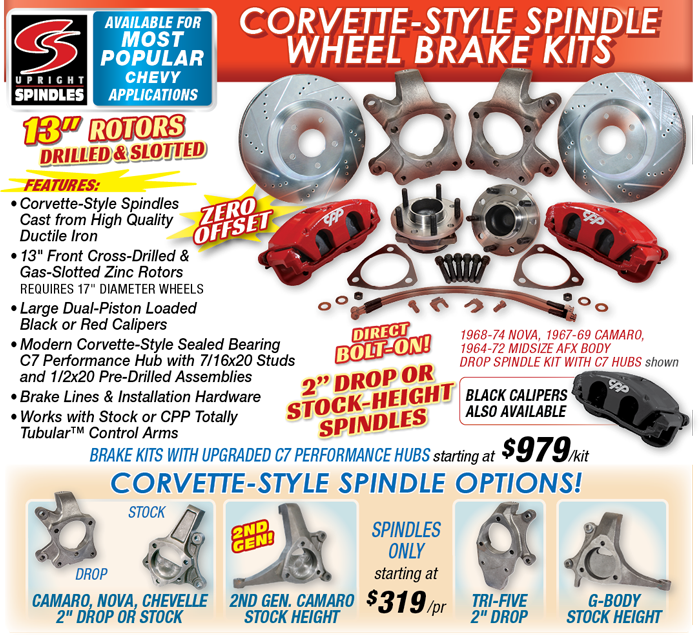
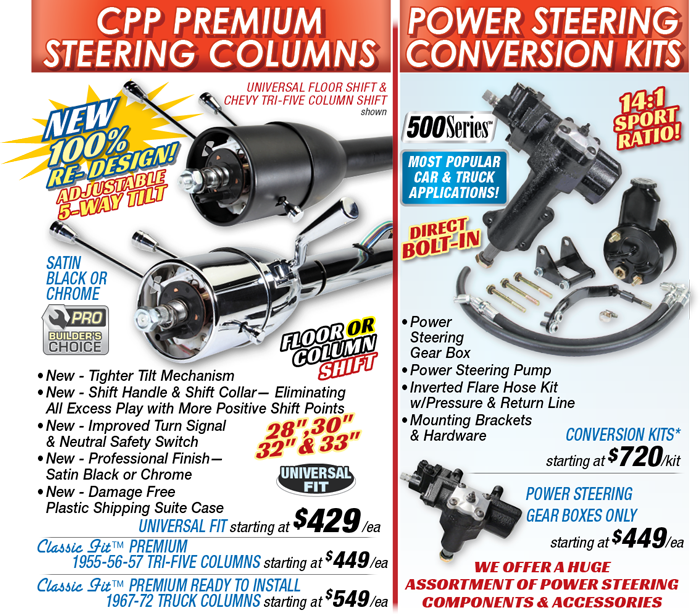
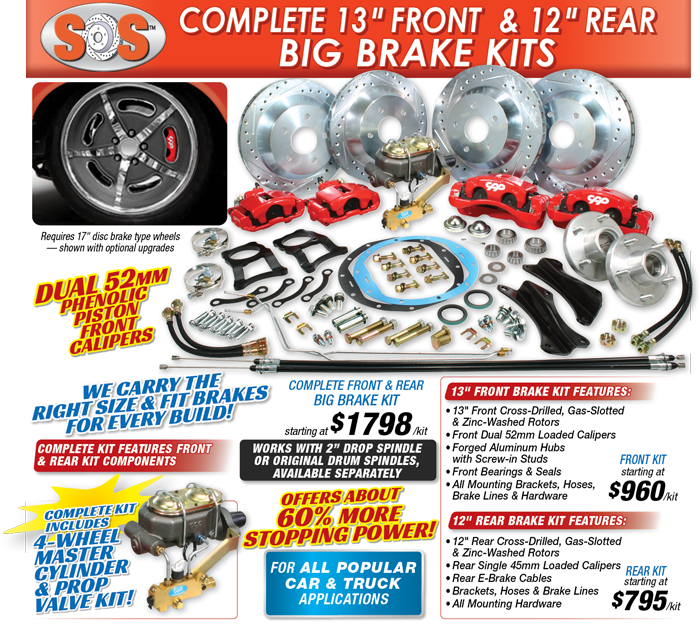
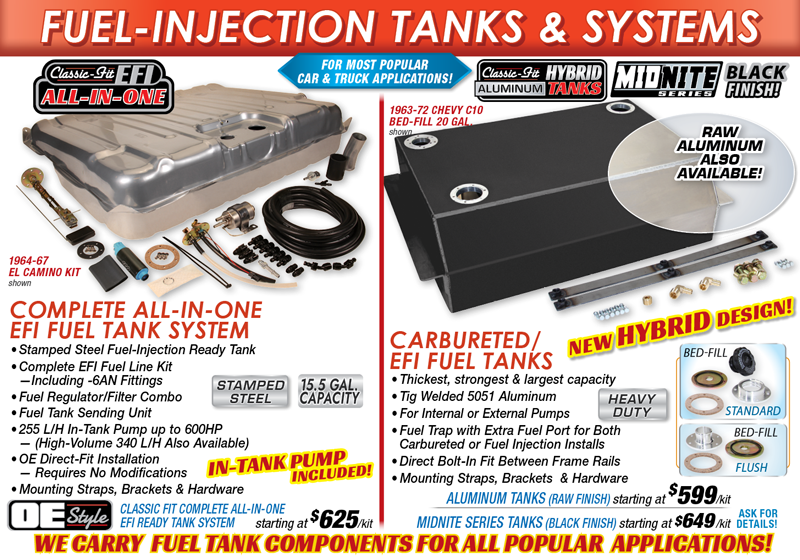

378 E. Orangethorpe Ave. Placentia, California 92870
#ClassicPerform

Wes Allison, “Rotten” Rodney Bauman, Shawn Brereton, Tommy Lee Byrd, Ron Ceridono, Grant Cox, John Gilbert, Tavis Highlander, Jeff Huneycutt, Barry Kluczyk, Scotty Lachenauer, Jason Lubken, John Machaqueiro, Ryan Manson, Jason Matthew, Josh Mishler, NotStock Photography, Todd Ryden, Jason Scudellari, Jeff Smith, Tim Sutton, Wes Taylor, and Chuck Vranas – Writers and Photographers
Travis Weeks Advertising Sales Manager
Mark Dewey National Sales Manager
Patrick Walsh Sales Representative
ads@inthegaragemedia.com
AllChevyPerformance.com
ClassicTruckPerformance.com
ModernRodding.com
InTheGarageMedia.com
inthegaragemedia.com “Online Store”
For bulk back issues of 10 copies or more, contact store@inthegaragemedia.com
info@inthegaragemedia.com
Editorial contributions are welcomed but editors recommend that contributors query first. Contribution inquiries should first be emailed to info@inthegaragemedia.com. Do not mail via USPS as we assume no responsibility for loss or damage thereto. IN THE GARAGE MEDIA, INC. reserves the right to use material at its discretion, and we reserve the right to edit material to meet our requirements. Upon publication, payment will be made at our current rate, and that said, payment will cover author’s and contributor’s rights of the contribution. Contributors’ act of emailing contribution shall constitute and express warranty that material is original and no infringement on the rights of others.

Copyright (c) 2024 IN THE GARAGE MEDIA, INC.
PRINTED IN U.S.A.


Cleveland, OH
(216) 281-8777

 firing up
firing up
 BY NICK LICATA
BY NICK LICATA

very few months I feel it’s important to check in with our loyal readers to make sure we are staying on point with the kind of articles you like reading in this here magazine. Believe it or not, I go through every email sent in and listen to what you have to say when it comes to running tech articles on the subjects you want to learn about the most, while at the same time hopefully keeping you motivated to stay on top of your project.
Over the years, I’ve gotten quite a few requests for more articles on small- and big-block engine builds, so we answered the call and dove into quite a few articles related to those engine platforms. With that said, we do our best to stay on top of the latest trends in engine builds, which due to their continued popularity, include quite a few LS engine swaps and builds.
Our intention is to try and cover most every engine platform equally, but we must also keep our ear to the ground and cover what is happening with the many engine shops we work with while paying attention to what their customers are putting between the ’rails of their rides.
Today the LS platform is stronger than ever for obvious reasons, such as its ability to easily make big horsepower, deliver unmatched reliability, and for those who like taking their hot rods on long cruises they offer great fuel mileage.
 PARTS BIN
PARTS BIN



 CHEVY CONCEPTS
CHEVY CONCEPTSInTheGarageMedia.com
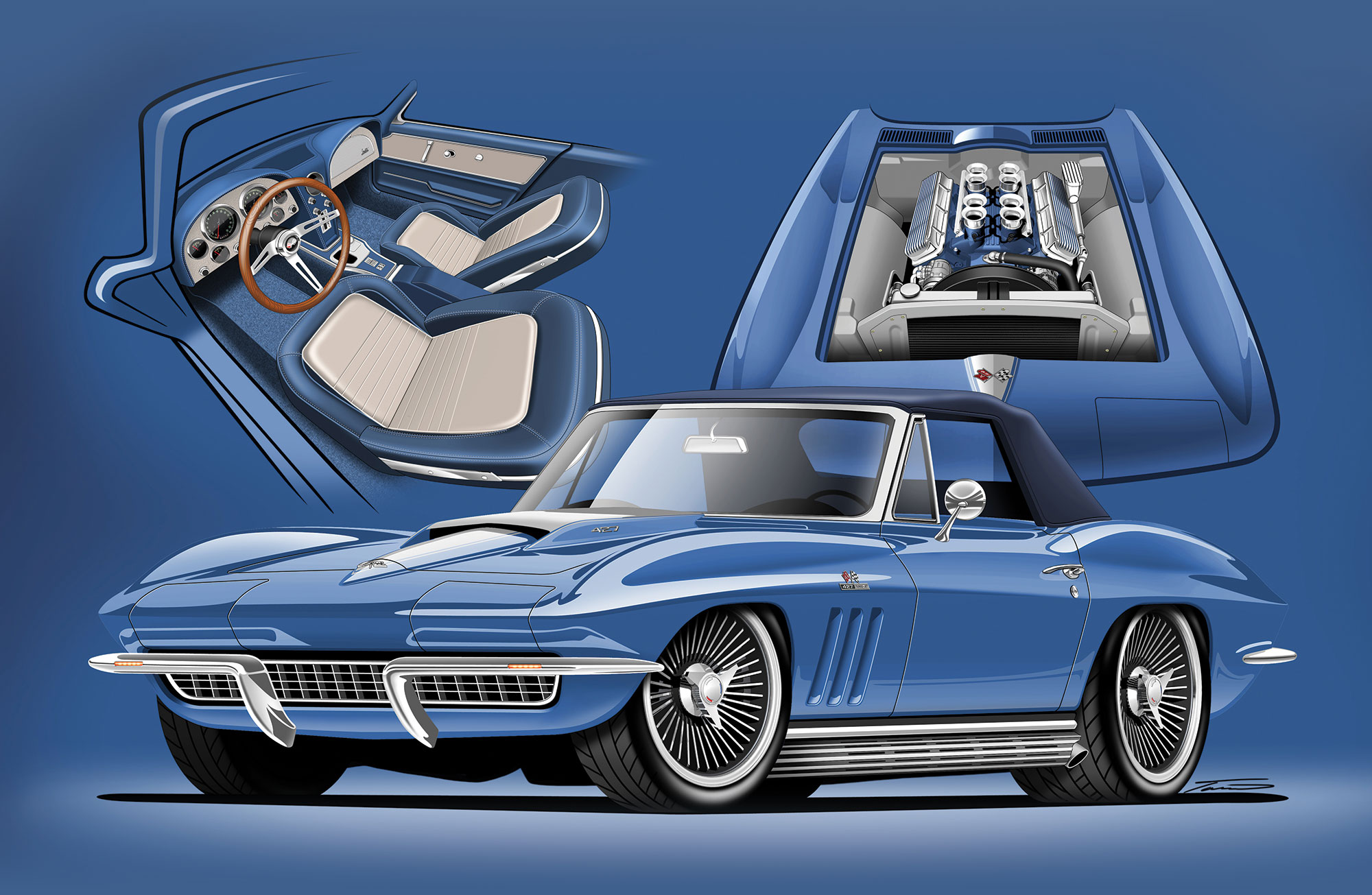
 Text & Rendering by Tavis Highlander
Text & Rendering by Tavis Highlander
ubtle restomods are a hot-ticket item these days. Even though many elements are unchanged from the factory, there’s still a nice opportunity to finesse little details to make the build unique. With an Art Morrison chassis the Vette is able to sit low with modern wheel and tire sizes. Turbine-style wheels have been scaled up to allow for big brakes while retaining an OEM look.
Under the hood is a big-block with stack injection. Off-white accents carry through the engine bay and into the interior. The stock seats have new slightly sculpted foam with more bolstering.
 FEATURE
FEATURE
 Images by NotStock Photography
Images by NotStock Photographyhe ’62 Chevy is iconic in several ways; the sexy lines were attractive in 1962 and remain so over 60 years later. The interior’s futuristic-looking design defies age, there was room enough for six people to ride in comfort, and the trunk space seemed to be never ending. To many vintage car enthusiasts, the bubbletop’s classic style only gets better with time. We’ll just say the car is aging gracefully. Furthermore, there is no need for aesthetic improvements as the car is pretty much perfect as-is. The same can be said for many early ’60s cars, but there’s just something about the ’62 Chevy that puts it in a class all its own.
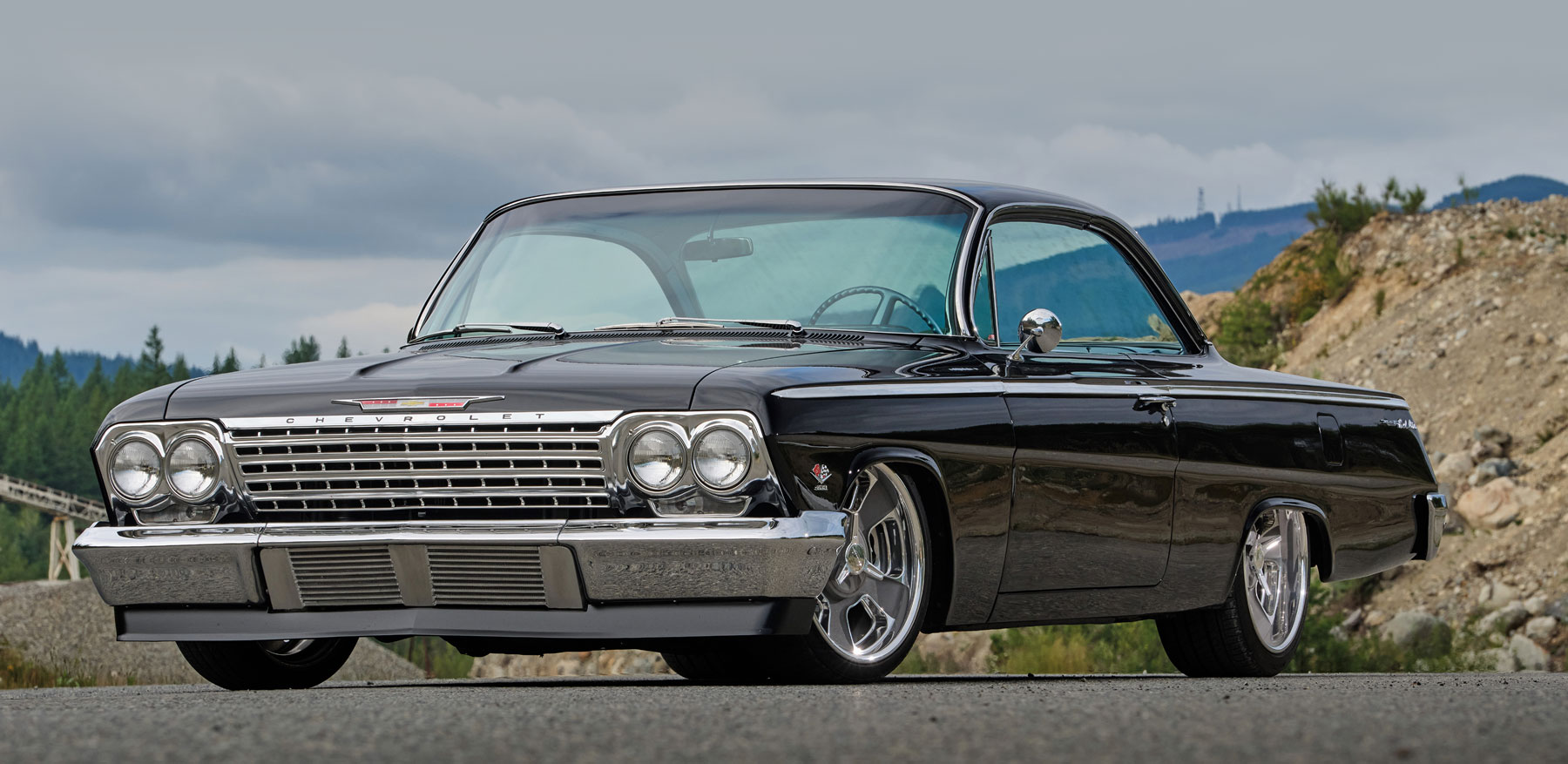
 TECH
TECH
 Images by THE AUTHOR
Images by THE AUTHORt’s an exciting moment. You’ve just finished bolting that freshly built engine in your hot rod. The engine’s so new that you can smell the paint curing. You fire it up and take all the right steps to help that new engine run properly. After a few miles, you begin to think, “I hope I did everything right. How would I know if there’s a problem?” Those are the kind of thoughts that can cause sleepless nights for new engine builders.
Or, you’re considering the purchase of a nice muscle car from a car flipper. The seller has zero knowledge of the engine’s history, and while you’re suspicious of the engine’s background, it might be too good of a deal to pass up. In both cases there is a positive step you can take.
The answer is something called used oil analysis. It’s really a simple process that is not expensive and is as easy as capturing a sample of used oil and shipping it off for analysis. They say that knowledge is power, and this kind of used engine expertise could be invaluable. Think of it as cheap insurance.
 FEATURE
FEATURE
Dave Roberts’ ’57 Chevy
 Photography by Wes Allison
Photography by Wes Allisonave Roberts, owner of this extremely potent ’57 Chevy is by no means related to the Los Angeles Dodgers manager of the same name, nor is he related to the legendary E. Glenn “Fireball” Roberts Jr. But what the Los Angeles Dodgers manager and the famous race car driver have in common is baseball. Roberts (the famous race car driver) pitched for the Zellwood Mud Hens, an American Legion baseball team where his ability to throw a fastball at a high rate of speed earned him the famous nickname “Fireball.”
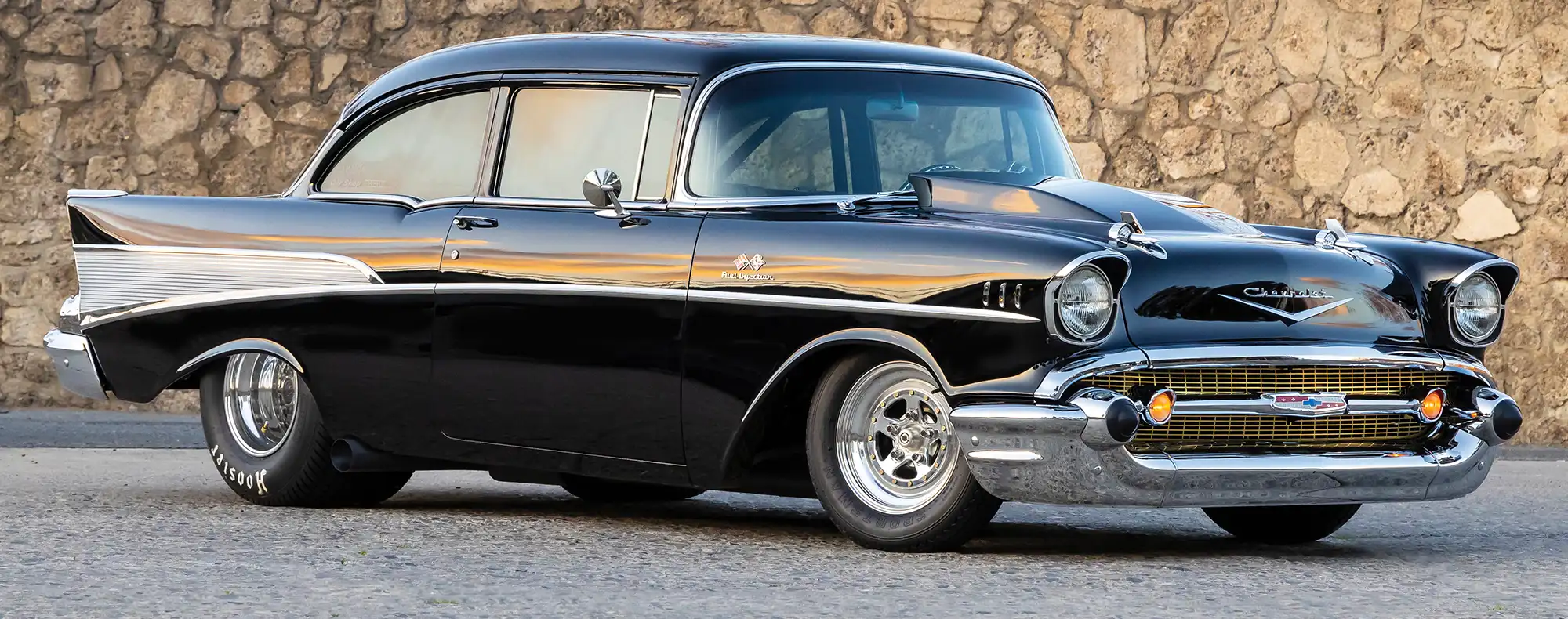
 TECH
TECHTig Welding Tips for the Amateur and Expert Alike
Making a Complex Process Slightly Simpler
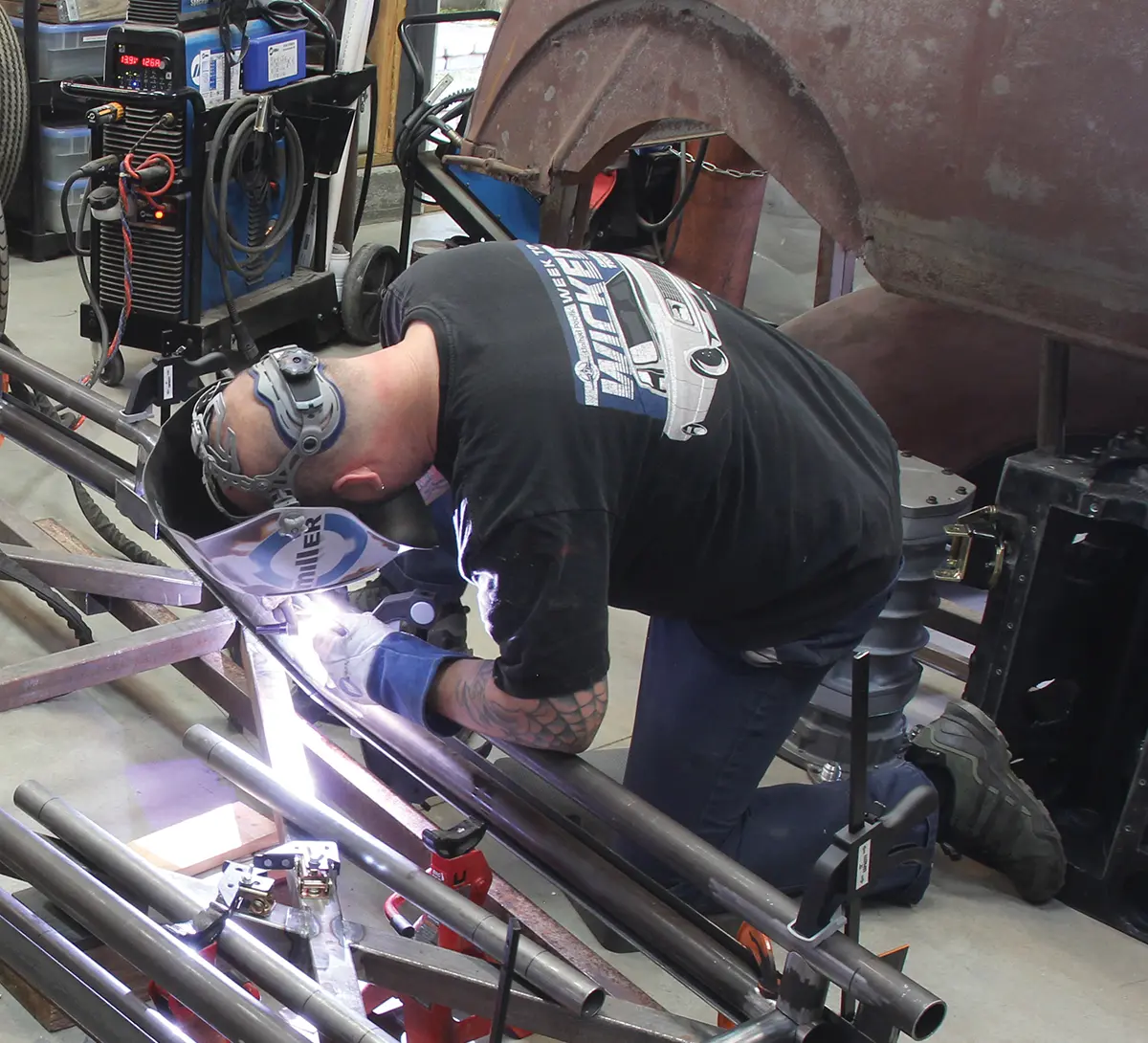
 Images by the author
Images by the authoror most, our first foray in the world of fabrication, at least as far as welding is concerned, took place at the business end of a MIG (Metal Inert Gas) welder. Arguably the easiest and cheapest method out there, it makes sense that many of us cut our teeth on the process. But as our skillset improves and the demand for a certain level of quality increases, the MIG method starts to lose its luster. Control is minimal, the process is messy, and the end result can leave something to be desired. There are many instances where MIG welding is perfectly acceptable, but very few where it exceeds the results of its advanced cousin, TIG welding.
 FEATURE
FEATURE
 Images by THE AUTHOR
Images by THE AUTHORn the automotive world, some words that are uttered transcend brand loyalty and command respect without a single objection. At the top of that list is arguably the name Yenko. Mention it and it will automatically be associated with legendary Bowtie performance—bring it into today’s realm and it also means a blue-chip investment. The Yenko Camaro legacy started in 1967 shortly after GM started rolling them out of the Norwood, Ohio, plant. It didn’t take long for Don Yenko to start doing engine swaps on L78-equipped SS Camaros out of his Canonsburg, Pennsylvania, dealership. He was ordering them equipped with the 396ci big-block, M21 Muncie four-speed gearbox, 4.10:1 rearend, and heavy-duty suspension, and then dropping in the L72 427ci big-block that was available in the Corvette. That was the formula for his Yenko Super Camaro (sYc). With 54 cars sold that year, he ramped up production with 64 cars assembled in 1968.

 TECH
TECH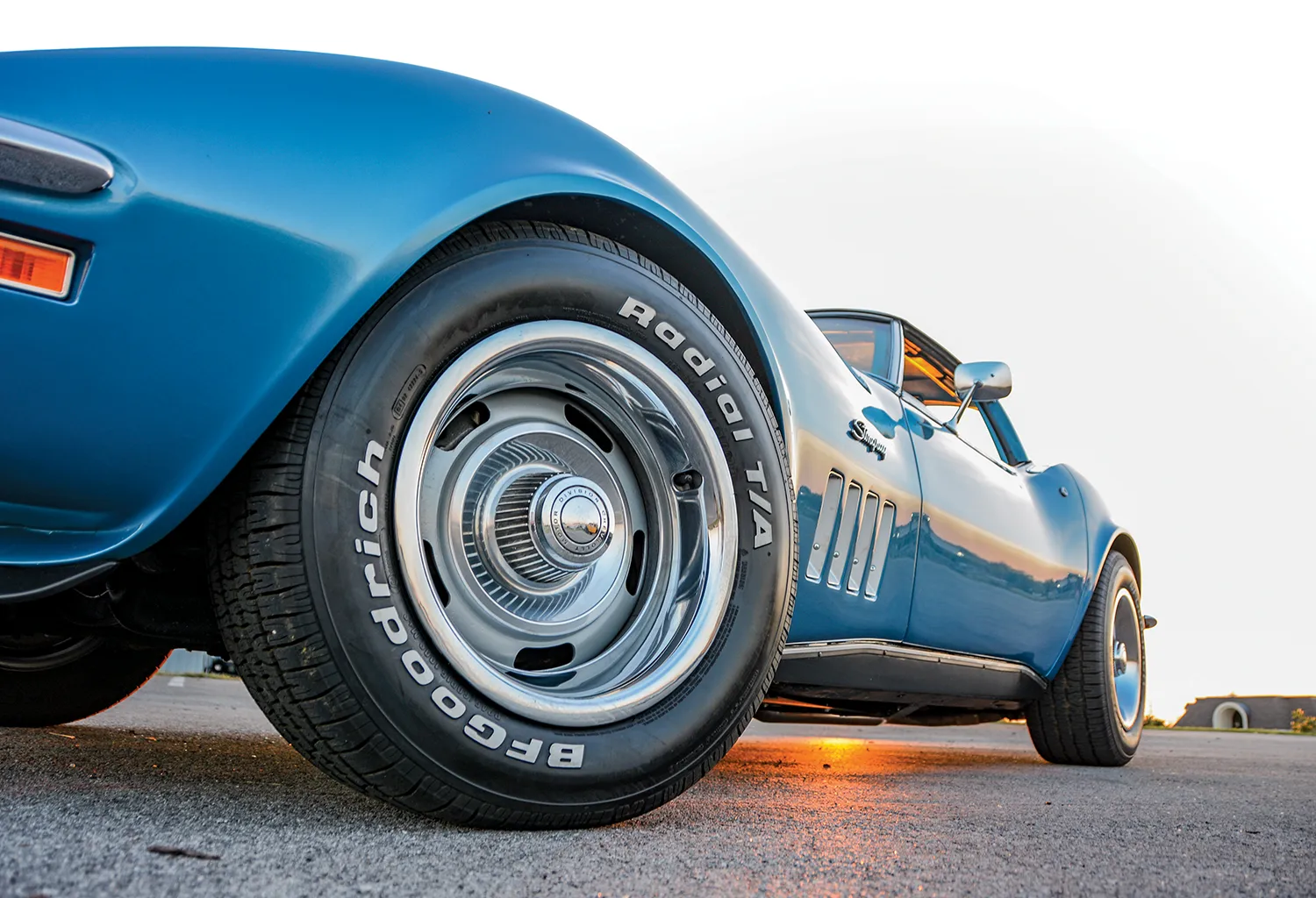
 Images by The Author
Images by The Authorires and wheels are the number one way to personalize a car. The Big Three manufacturers started picking up on that during the ’60s. Many cars had multiple wheel options based on the buyer’s tastes and budget. In many cases, the original wheels ended up being tossed to the wayside, in favor of aftermarket wheels like Cragar S/S, American Racing, Fenton, or other popular wheel brands. Long forgotten are the steel wheels that rolled beneath these famous Chevys back in the day.
The reality is that every Chevrolet produced until well into the ’70s came with stamped steel wheels, with the exception of the limited-production Kelsey-Hayes aluminum wheels that were an option on C2 Corvettes. The idea of a styled steel wheel didn’t hit the market until the mid ’60s with other makes leading the charge, but Chevrolet followed suit in 1967 with the introduction of the Rally wheel (sometimes spelled “Rallye”). Wheel designs remained fairly straightforward through the years, but many size and backspacing differences offered precise fitment across all of Chevrolet’s product lines. Today, all of those differences are difficult to recognize, unless you carry a measuring tape to your local swap meets to find the exact fit you want. Most folks opt for aftermarket reproductions, like the ones available from Coker Tire, because the sizes and backspacing are dialed in for popular fitments.
 FEATURE
FEATURE
 Images by Patrick Lauder
Images by Patrick Lauderuring Mike Casey’s high school days, the muscle car and hot rod magazine world was thriving. It was the early to mid ’80s and magazine racks were stuffed with automotive publications battling for newsstand notoriety. At the same time, the editorial staffs were in stiff competition to get the coolest cars in their magazine first. Yeah, feature editors were trying to scoop one another when they caught wind of a high-profile car being built. They’d photograph the car and write up the story before the paint had fully dried. It was a time when Hot Rod magazine was king, but with the muscle car craze in full swing, there were plenty of titles available for young hot rodders to grip their greasy hands on, and at $1.50 a pop, high-school-age kids were able to spend their lunch money on a magazine over at the local 7-Eleven newsstand rack and forego the 79 cent bean and cheese burrito basking under the heat lamps. We here at ACP are not nutritionists, but it’s safe to say the magazine was likely a healthy alternative to that microwaved artery-clogger.
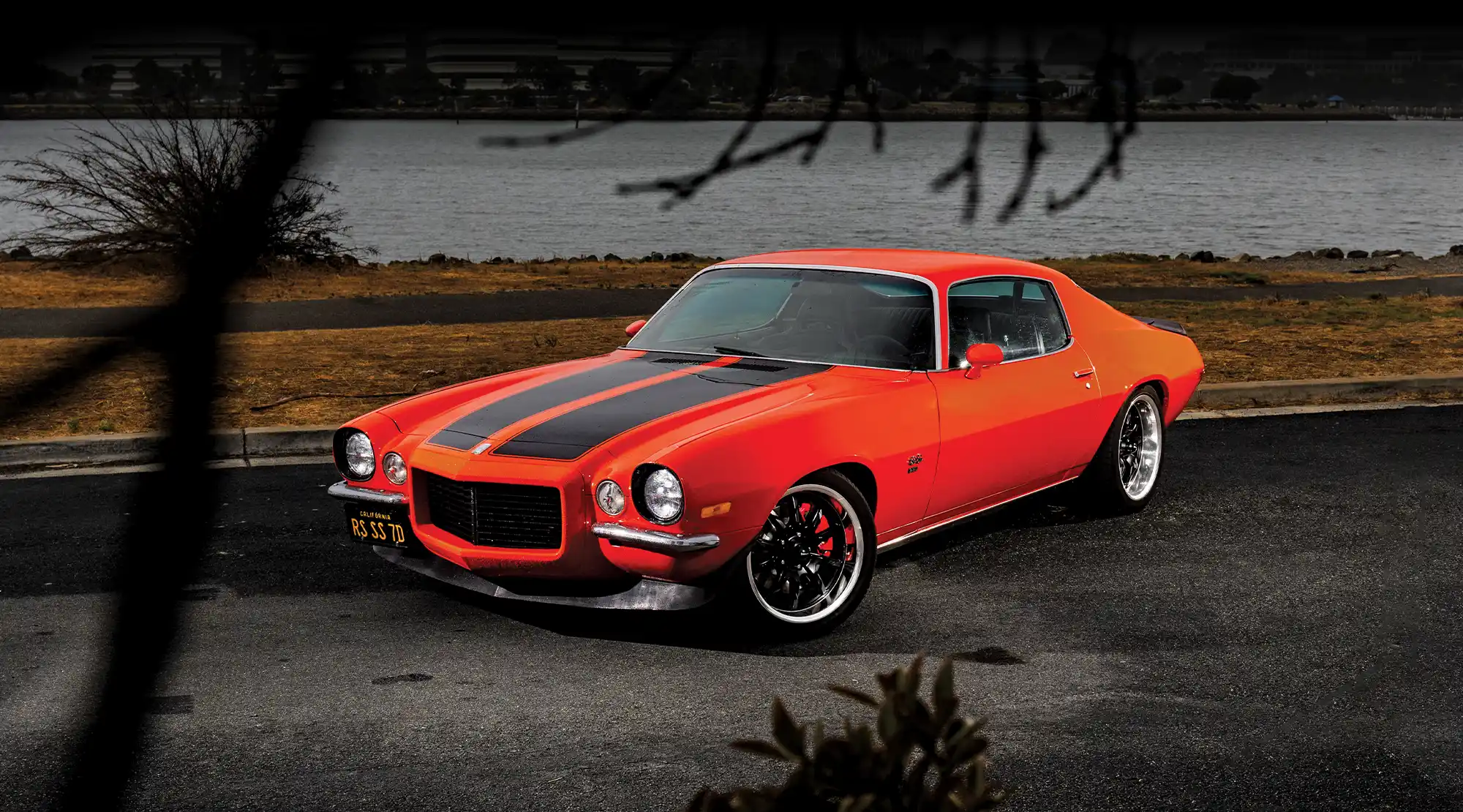
 TECH
TECH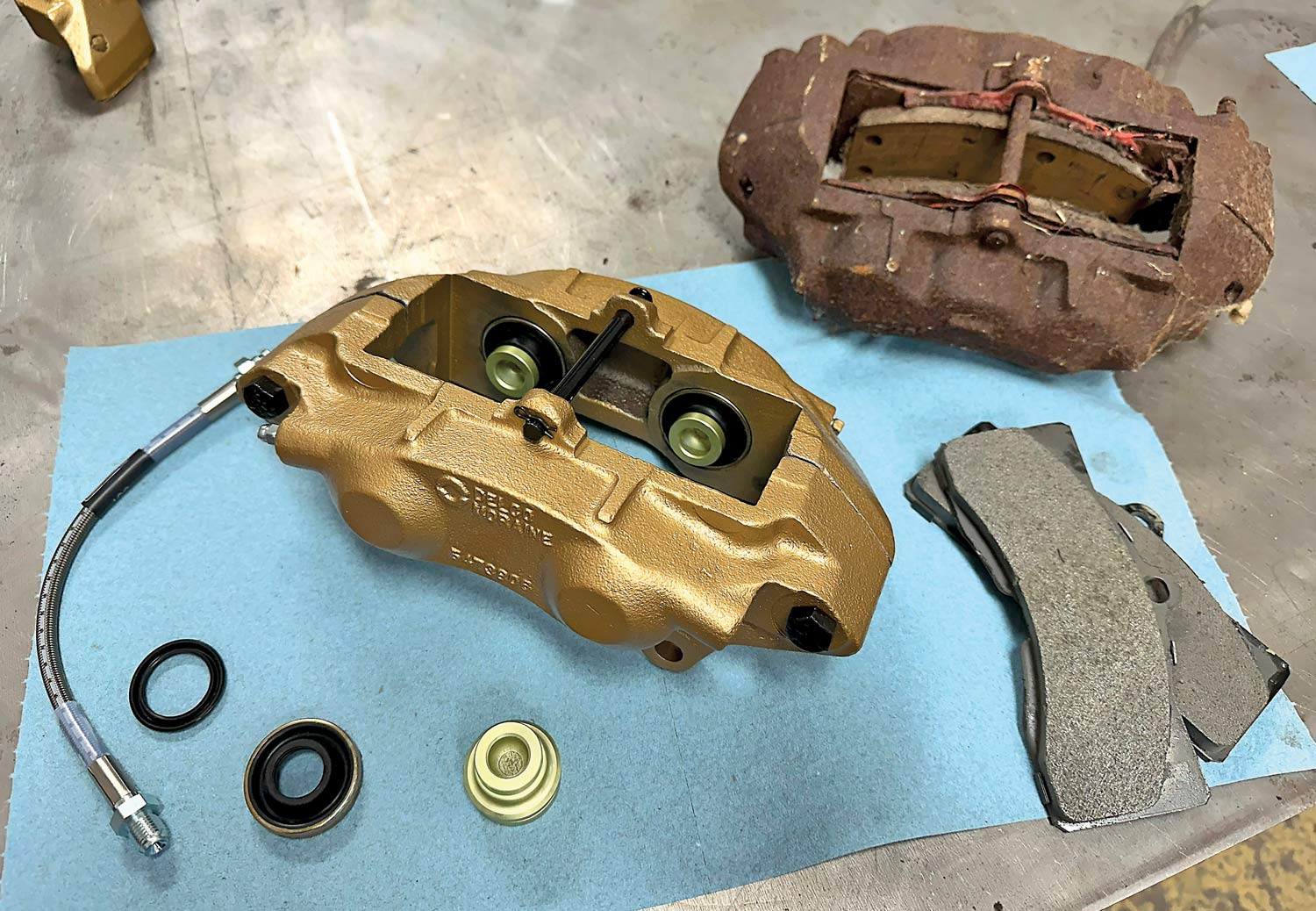
 Images BY
Images BY he whole point of turning wrenches on your own car is to experience the satisfaction of getting behind the wheel of a car or truck you had a hand in building. Admittedly, sometimes we all do it because a buck must be stretched, and if we didn’t do it ourselves it wouldn’t get done at all. Sometimes we do it because there are no options in the marketplace that match what we’re trying to build. But even when both of those things are true, for most of us just getting into the shop and spending some time working with our hands is pure therapy.
That’s why we’re taking you along on this little misadventure. The project at hand is a basket case ’80 Corvette that is going back together slowly. Eventually, we plan to bolt up a quality big-brake kit with stopping power like hitting a brick wall. But for now, we’re just trying to get the stupid thing back together and moving under its own power. Every nut and bolt has to be touched, so going top-shelf with every component as the car goes back together would cause the credit card to go nuclear. So, a little common sense had to be applied.

 Images by THE AUTHOR
Images by THE AUTHORhere is no substitute for experience, and no one knows that better than Limerick, Pennsylvania’s own Mark Rubright. This muscle car master has been “runnin’ whut he brung” since he was barely old enough to legally drive. “I started racing my burgundy ’68 Chevelle when I was 16. Street racing was a way of life for me, and I spent my time setting up races and taking on the competition. Yeah, and I still have that Chevelle,” Mark says.
That first Chevy would go on to be rebuilt several times, each incarnation bringing lower e.t.’s. “At first, it ran 13s, then I redid it and ran 12s. By the time I was 18 I rebuilt it again, turning the Chevelle into a serious contender,” Mark states. “I was running 9.90s in Super Street and Outlaw Pro Street.” Mark would go on to race on TV shows like Pinks, No Prep Kings, and Street Outlaws, racking up wins and a solid reputation along the way.
 Event
Event
 Images BY THE AUTHOR
Images BY THE AUTHOR or diehard Chevy owners there’s nothing finer than rolling open the garage door after a long winter of wrenching on your ride to welcome another season of amazing weather and the opportunity to burn plenty of high-octane fuel. To take it up yet another notch, add in the promise of plenty of sun and surf combined with the opportunity to hang out with an endless stream of high-horsepower rides for a fun-filled weekend and you’re destined for muscle car nirvana. If you dig hopped-up Bowties packing everything from huffed big-blocks to turbocharged LS engines and everything in between, then the 33rd Annual Cruisin’ Ocean City in Maryland is your promised land. This picturesque little seaside community was the place to be May 16-19, 2024, along with well-over 3,000 registered car and truck owners rolling into town to cruise the 10-mile strip and check out just what makes this event so very cool.
Advertiser
- All American Billet23
- American Autowire43
- AMSOIL9
- Art Morrison Enterprises31
- Auto Metal Direct39
- Automotive Racing Products29
- Borgeson Universal Co.47
- Classic Industries45
- Classic Performance Products4-5, 85, 92
- Dakota Digital91
- FiTech EFI75
- Forgeline Motorsports71
- Golden Star Classic Auto Parts7
- Granatelli Motor Sports, Inc.77
- Heidts Suspension Systems71
- Hemmings61
- JJs Rod & Custom89
- Lokar2
- National Street Rod Association63
- Original Parts Group27
- Pertronix11
- Powermaster Performance85
- Scott’s Hotrods77
- Speedway Motors59
- Thermo-Tec Automotive85
- Triple Crown of Rodding, LLC13
- Tuff Stuff Performances75
- Vintage Air6
- Wilwood Engineering55








